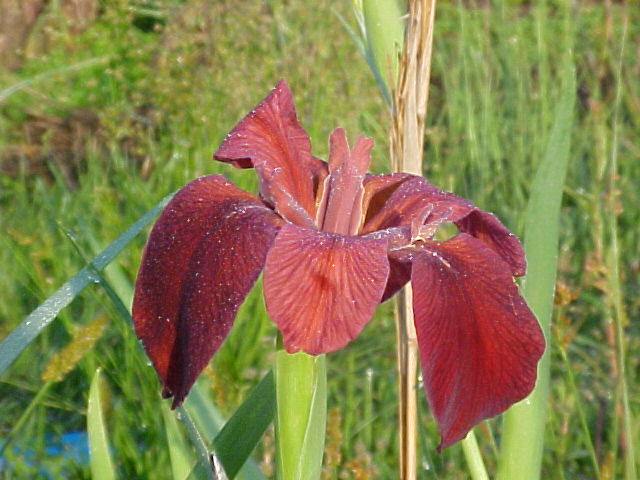
Cherry Bounce–a cultivar named by Dr. Ira Nelson and a great representative of Iris nelsonii.
The Cajun Prairie grades into freshwater marsh habitats along its southern border, with pockets of marsh in the prairie (marais and platin features) and pockets of prairie vegetation in the marsh on drier features (pimple mounds)—a complex of micro-relief features that permit the survival of both plants that prefer dry locations (dry feet) or wet locations (wet feet). Among the wet feet plants are the Louisiana Irises—a group of species that famously formed the largest reported iris marshes in the world, the Louisiana Gulf Coast. These irises also inhabited many wet sites in the Cajun Prairie and are as such a significant ingredient in the prairie diversity and in the prairie garden.
Five species:
Iris fulva (mainly reds, some rust, yellow and black (dark violets))
Iris giganticaerulea (mainly blues, some violets and whites)
Iris hexagona (mainly blues, some violets and whites)
Iris brevicaulis (mainly blues, some violets and whites)
Iris nelsonii (mainly reds, but some rust, yellow, black, white, blue/violet).
1. Iris fulva—this ‘red’ iris is considered the only truly red iris in the world. It is supposed to be pollinated by hummingbirds in contrast to the variety of bumble bees that pollinate the majority of the other irises. This short species (usually less than 3 feet in height) was common in the Atchafalaya Basin and north in the Mississippi River drainages into Illinois. These bloom in early April in the Cajun Prairie Gardens. Varieties derived from I. fulva appear to prefer some shade or uneven sunny exposure even during the blooming season, whereas most of the other varieties prefer full sunny exposure. Several varieties of yellow and black flower colored forms are very short and barely reach a foot in height.
2. Iris giganticaerulea—this ‘giant blue’ iris may reach 6 feet in height. It was widely distributed in the freshwater marshes and even into the salt marshes along the Louisiana coast. These vast marshes contained millions of these irises and formed the largest iris marshes in the world. Even a green (greenish-white) flowered iris has been hybridized. These bloom in early April in the Cajun Prairie Gardens.

Iris giganticaerulea–the giant blue Louisiana Iris and a few Professor Neil, a Joe Mertzweiller tetraploid cultivar.
3. Iris hexagona—this ‘giant blue’ iris is just a bit less impressive in height than I. giganticaerulea. It is difficult to separate from its sister species, but it does have an obviously different bloom time. These bloom in late April in the Cajun Prairie Gardens.
4. Iris brevicaulis—this ‘Zig-Zag’ blue ‘short-stemmed iris’ has decidedly bent stalks at the bud positions. It is usually less than 2 feet in height and commonly attains a height of no more than one foot. These bloom in early May in the Cajun Prairie Gardens. The late blooming makes them hard to locate in the wild—I usually found them in the Winter as green leaves. Each prairie remnant that Charles Allen and I routinely visited had at least one clump of these irises, although we never saw them in bloom as they were generally shaded among shrubs or trees in wetter areas and seldom bloomed but rather formed fairly large clumps (>3 feet in diameter).
5. Iris nelsoni—some contend that this is Louisiana’s only endemic native unique to the state. These bloom in early April in the Cajun Prairie Gardens.
This iris is considered to be a natural hybrid between I. fulva and I. giganticaerulea with a small amount of genetic material from I. brevicaulis that was geographically isolated from the original genetic parents for sufficient time to be considered as a separate species; however, it hybridizes with the other species with little difficulty (The Louisiana Iris—both first and second editions were prepared by members of the Society of Louisiana Irises and are indispensible for anyone wishing to grow these native plants in order to gain a full measure of their variety and importance). It usually looks more like a ‘giant fulva’ and was called ‘super fulva’ –this is one of the many common names, including “Abbeville iris, Abbeville red, and Abbeville yellow.” Abbeville is a community in southern Louisiana at the edge of the Cajun Prairie—the prairie merges with the freshwater marshes just south of the community. The irises were first discovered in this area (and are believed to be restricted to this area) and made famous by W. B. MacMillan (famous local hybridizer who lived in Abbeville) and Ira Nelson (Professor of Horticulture at University of Louisiana Lafayette—formerly SLI and USL). The variety in flower color, growing habits and ease of hybridizing made it the focus of Louisiana iris hybridization.

Jeri–a cultivar by Neil Berinot.
Each species is different in size, shape, color varieties and blooming times in the Cajun Prairie. The first bloom usually appears at the very top of the plant (terminal position) and presents itself most dramatically. I must confess that this first bloom is always my favorite. I would grow plants just for that first bloom—it is that impressive. The plants also differ in the number of bud positions—the number varies from one to 6 bud positions, with usually 2 flowers per bud position. Natural and man-made hybrids have muddied these character states and vary greatly in their reproductive and vegetative potential. Many wild-collected varieties are among the great growers and are prolific in reproductive and vegetative propagation. They usually bloom in unison and thus provide a very short-lived show for the gardener, but it is perfect for the pollinators, which are drawn by the ‘show’ and have ready access to many flowers for nectar—this also greatly enhances chances for pollination of the flowers. Thus in nature, it not uncommon to see a large area in bloom one week and only remnants of blooms the next week. Over a span of 3 weeks, the first week has few blooms and lots of flower stalks pregnant with flower buds, a second week with awesome blooms (flowers remain open for 2 days; flowers are paired at nodes with usually 2 or 3 nodes; flowers open sequentially, and thus usually all blooms are done in as few as 8-10 days), and a third week with the final blooms—many lower on the stems. The initial flowers to open are usually the ones on top (terminal position) of the spade (stalk)—hundreds to thousands of these blooming at one time makes the maximum show.

Black Widow–my favorite Louisiana Iris–an early hybrid of Iris nelsonii by W. B. MacMillan.

Dixie Deb–a cultivar provided by Frank Chowning.
Hybridizing these irises has become a major interest not only in Louisiana but also in California and many northern states. It also has become a major interest in Australia—the irises bloom there in our autumn (their spring) as their seasons are the inverse of ours. All of these irises have been used in the hybridizing programs. Tetraploids have been developed and are now a significant part of the industry. In the last couple of decades, hybrids between these Louisiana Irises and Virginia Irises (I. virginica) have been made. The only color in the spectrum (ROYGBIV) that does not naturally occur in the irises is clear orange, but a variety of hybrids exist that now closely approach if not satisfy the description. I always refer to daylilies (Hemerocallis spp.) when I talk about flower colors, because the opposite problem exists in their color range in that there is no clear, bright blue daylily, but there are a myriad of red, orange, yellow, purple, black and white daylilies; this is due to the lack of the pigment anthocyanin. The daylilies however typically bloom just a couple of weeks after the irises peak around April 15th, except for a variety that I was given years ago and long forgot the name, so I called it ‘April Fool Orange,’ because it bloomed on April Fool Day on 2 consecutive years in the early 2000s; thus it blooms at the same time as the early to mid-season Louisiana Irises on some years and therefore giving the garden the entire range of color from black to white including ROYGBIV. Varying amounts of green are obvious in white and yellow flowers; green is an unusual color for flowers in most plants.
By the way, I had grown and divided out some 40 plants of the ‘April Fool Orange,’ but I arrived home after a day of teaching only to discover that someone had visited my garden and dug these plants—all 40 of them as they were the first of my daylilies in bloom on this early spring day. Fortunately, I had a couple planted in another area and still have a few, but I now am well aware that extraordinary plants are difficult to cultivate in privacy in an open yard. I once had a circle of Phlox that was 6 feet in diameter on the corner of my gardens—these disappeared one spring day—again dug while in full bloom. I knew something was wrong as I drove by the garden, but it took a couple of minutes to comprehend the change. On several occasions, the Butterflyweeds (Asclepias tuberosa) were attacked when in full bloom, but their deep root systems protected them from complete disappearance. I have been lucky in that several visitors have come to look at the Louisiana Irises when they were in full bloom, but they took only small pieces such that I lost no significant clumps to their adventures.
There are now more than a thousand varieties of Louisiana Irises available in the trade. A number of wild collected varieties are still popular—I have many of these as my garden is a wilderness—but the more tame, highly derived varieties do not survive and grow with vigor after a few years of being treated as wildings.
Other members of the family Iridaceae in the Cajun Prairie include Habertia lahue (Prairie nymphs) and Sisyrinchium spp. (Blue-eyed grasses). Iris virginica (Viriginia Iris or Blue flag) and a number of other species are reported from Louisiana.

Violet Ray–a cultivar provided by Caroline Dormon.

Cajun Sunrise–a cultivar provided by Joe Mertzweiller.
Gardening with Louisiana Iris
1. Louisiana irises bloom over a 6 week period (the first bloom of plants may appear at the end of March thru early May in Louisiana = first half of Spring) in the Cajun Prairie Gardens. There are 3 basic groups based upon the appearance of the first blooms: early, mid and late season, with each group usually blooming for 2 weeks or so. Do you want all of the irises to bloom at the same time for maximum ‘flush of flowering’ effect, or do you want to spread the bloom season over the entire period?
2. Louisiana irises come in 3 basic heights: tall (> 3 feet; some reach 6 feet), medium (2-3 feet) and short (< 2 feet; some are less than one foot). Do you want all the irises to be of similar height for maximum effect? Do you want to plan a bed with taller irises in back and short irises in front?
3. Louisiana irises come in wild-collected varieties and hybridized varieties. In my experience, hybridizing has resulting in spectacular irises, but they appear to lose some vigor compared to the wild-collected varieties. Which do you prefer?
4. Each variety of Louisiana irises has a typical number of bud positions—the number affects not only the number of flowers but also the length of the blooming season as flowers tend to open one at a time spaced out at 2 apart. Thus a stem of an individual plant with 2 bud positions should produce 4 flowers over a 6-8 day period, and a stem with 3 bud positions should produce 6 flowers over an 8-12 day period, and a stem with 4 bud positions should produce 8 flowers over a 10-14 day period, and so on. Select varieties in part based upon not only their blooming time—the time of the appearance of the first bloom—but also upon the number of the bud positions. The plant stems with many bud positions do fall over more often than those with fewer bud positions. Wild collected irises usually had 2 bud positions—in fact early hybridizers spent a great deal of time searching for plants with greater numbers of bud positions and made this one of the major hybridizing features. Massive blooms from multi-budded plants may be a bit unruly—there are drawbacks from having too many flowers. What is your preference in numbers of bud positions? Remember—my favorite bloom is the first bloom, so a single bud position is enough to blow my mind—you get 2 flowers from the terminal bud that bloom sequentially, i. e., one after the other with a day or so between the 2 blooms.
5. Louisiana irises, like daylilies, have been manipulated to form tetraploids (they are natural diploids). These tetraploids are usually taller and more robust with larger and thicker stalks and blooms. Are you interested in tetraploids?
6. Louisiana irises form a rainbow of colors from white to black, including the common blues, purple, yellows, reds, orange blends, and even greens. What colors are you interested in? The flowers also may appear in half a dozen different forms (open, cartwheel, ruffled, pendent, recurved, doubled and more) and vary in color presentation (self (standards and falls are the same color), bicolor, bitone, edged and more). What flower varieties might do best in your garden plan?
7. What habitat are you planning, a raised bed or a pond-side garden? These irises do grow in raised beds that are well-watered and perform magnificently. They apparently do prefer heavy feeding with manure and/or some commercial fertilizer in the Fall and Winter. And they love water features in their habitat, but the water should not be so deep as to cover their leaves through their entire length for many days—shallow damp to wet sites are recommended for long term cultivation.
8. Louisiana irises are green in winter and spring, and brown in summer and fall. You can use Roundup on them in late summer when the plants are brown in order to get a pure stand and reduce competition.
9. Since their bloom season is brief, they probably function best when inter-planted with other plants. If you want to grow them with other plants, the following plants are recommended in Louisiana: Hemerocallis (daylilies), native Crinum americanum (American lilies), Asclepias (Milkweeds), Amsonia (Blue stars), Rudbeckia texana (Texas brown-eved susans), Hydrolea ovata (Blue waterleafs), Pontedaria cordata (Pickerelweed), Physostegia (Obedient plants), Hymenocallis (Spiderlilies), Arnoglossum (Indian plantains), Helenium (Sneezeweeds) and Rhexia mariana (Maryland meadow beauties). Iris virginica (Blue flags) can also be grown with them, but it is a bit aggressive.
10. Avoid the exotic Iris pseudacorus (Yellow flags) as they are overly aggressive, take over and kill Louisiana iris by lifting them out of the substrate where they either dry out or get burned by the sun.
11. Some of the red varieties, e.g., I. fulva and I. nelsonii, appear to need some shade during the afternoon. Most varieties tolerate full sun and thrive. Exposure of rhizomes to directly sunlight may damage them; thus, mulching in Summer is recommended. Some mulching in Winter may not be harmful.
12. Plants should be divided and replanted every 5 years for maximum display. They are heavy feeders and need manure or fertilizer. If they are not fed, they typically begin to consume themselves, and you will see the clump begin to shrink in size.
13. The Louisiana irises do not compete well with trees and grasses.
14. Normally, Louisiana irises double in size each year, i.e., double the number of fans. Good treatment will usually enhance results. Severe drought, heavy competition and other adverse conditions will reverse this normal pattern, and the plants may well consume themselves in order to survive. After 20 years, many of my iris clumps had shrunk to a single rhizome as a result of the wildness in my prairie.
15. Plants that are not doing well will cease to bloom or bloom sporadically, although they may grow vegetatively and not only form but also maintain a clump. I have some clumps that have not bloomed for 5 years—probably due to my lack of feeding them and the adverse affects of competition and summer droughts in the prairie garden; nonetheless, they persist and may do so for decades.
Field Test of Louisiana Irises
Two views of the Cajun Prairie Gardens’ Iris marsh in April 2001–more than 200 irises were planted in a low-lying marsh-like area (a third of an acre). The irises made their maximum display of blooms in 2001, where they displayed more than 2000 scapes. Over the next 10 years, little care was provided, and the marsh remained dry during summers and little fertilizer was applied–the irises consumed themselves such that only a hundred different kinds remain with most of them blooming only a single scape in 2015. However, the plants that survived this naturalization in situ are those that I advise growing in prairie gardens. I have reduced the size of the prairie iris garden to the area around the gazebo as seen here in 2015. The large iris marsh is now an area predominated by Hibiscus as seen in an earlier post.
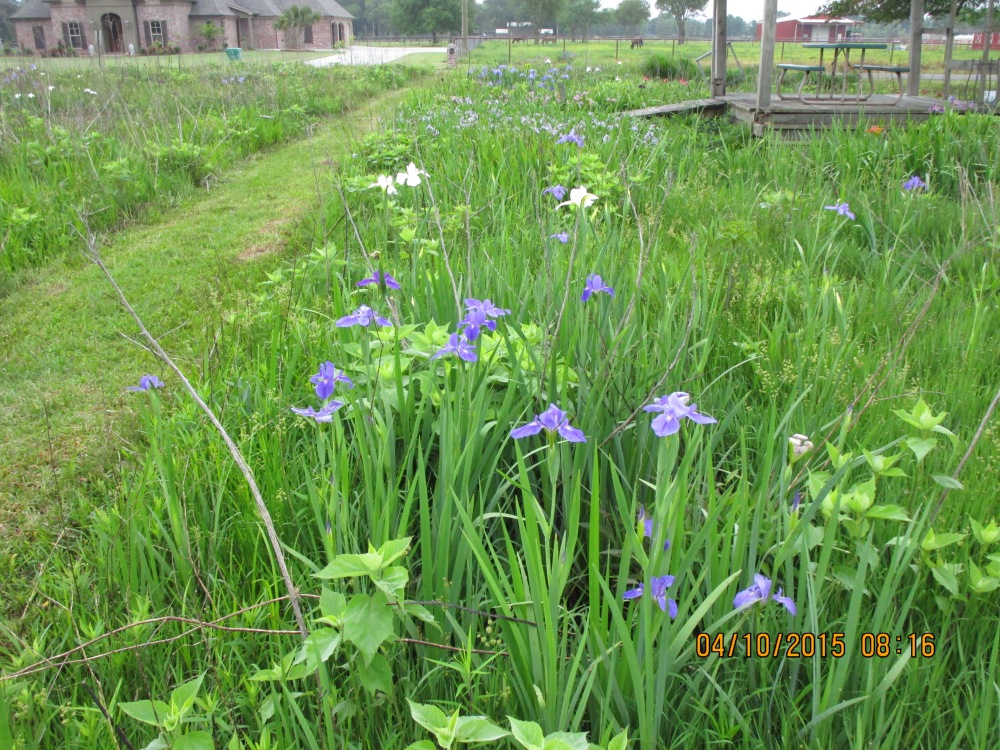

Gail and Caroline in the Iris garden on Easter Day (2014).
Posted by M. F. Vidrine (malcolmvidrine@yahoo.com).

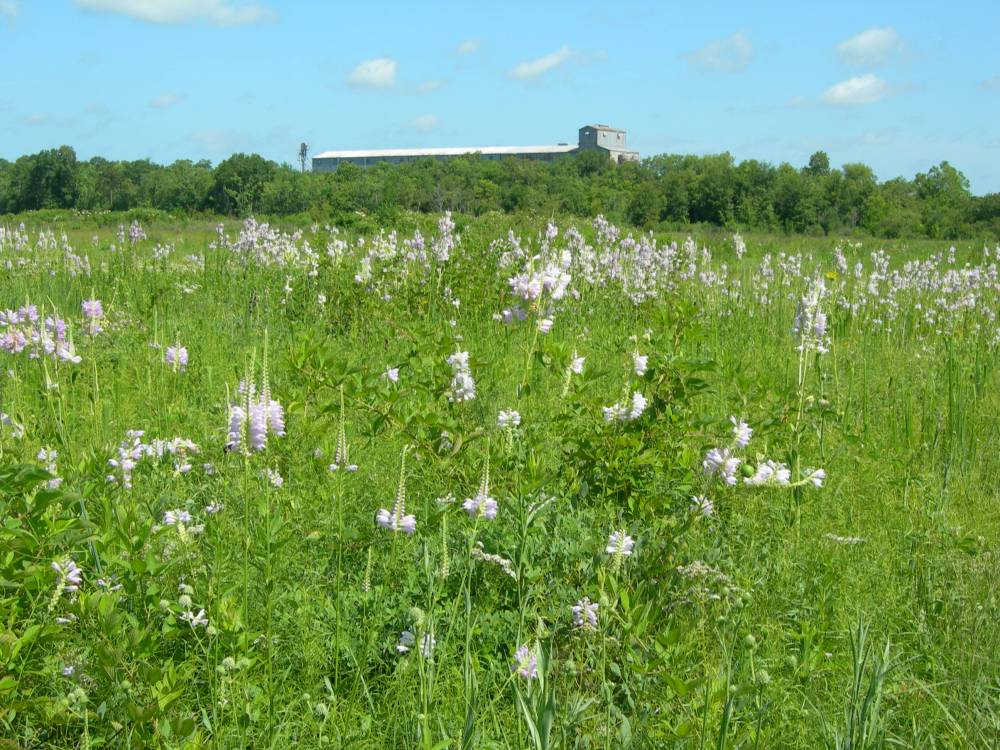
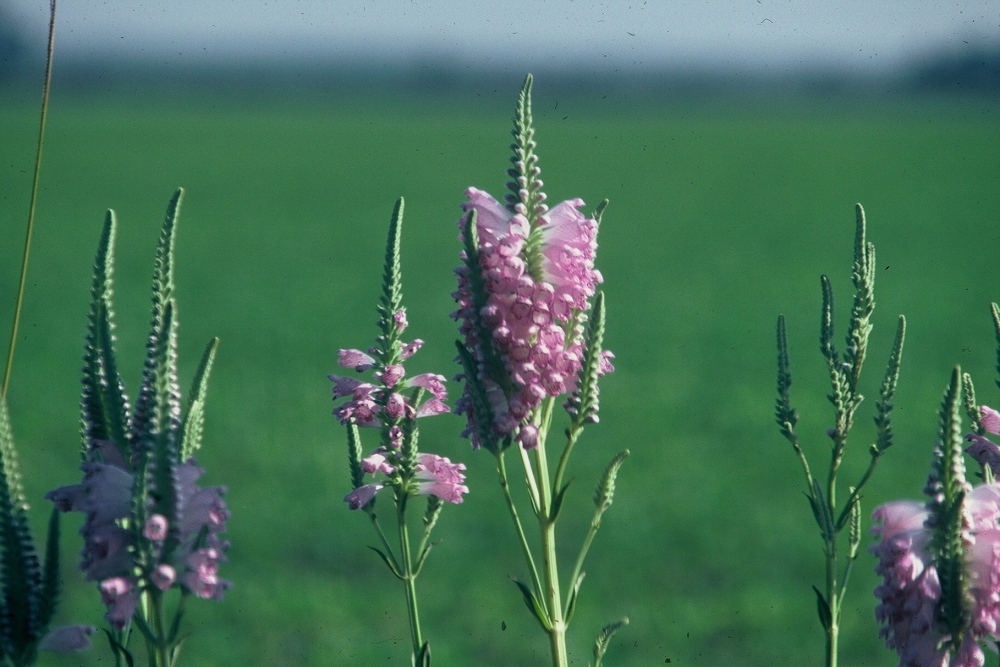
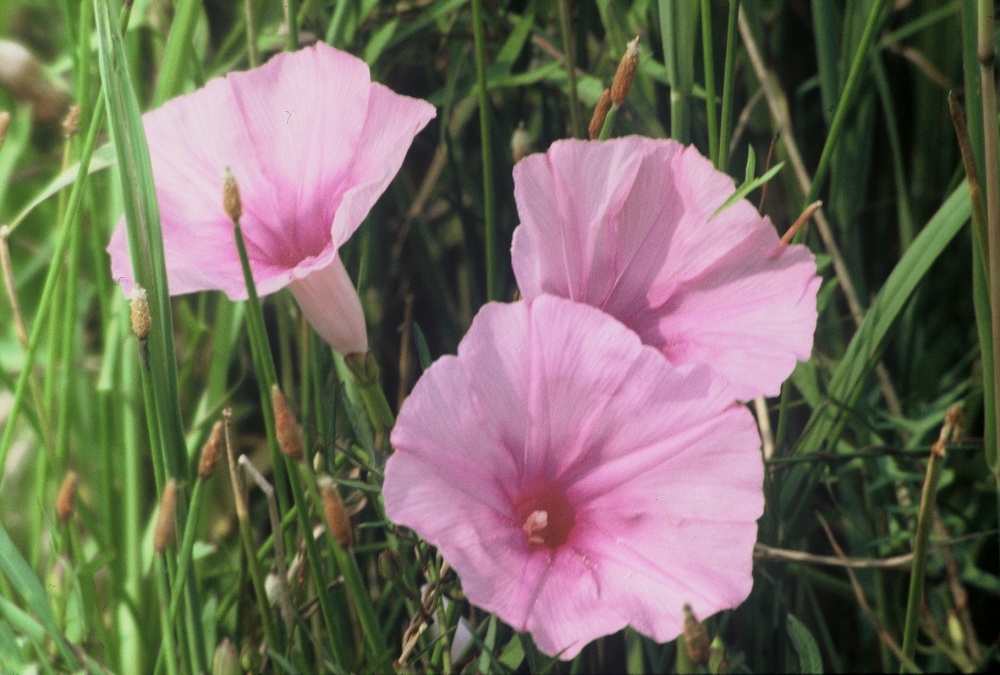


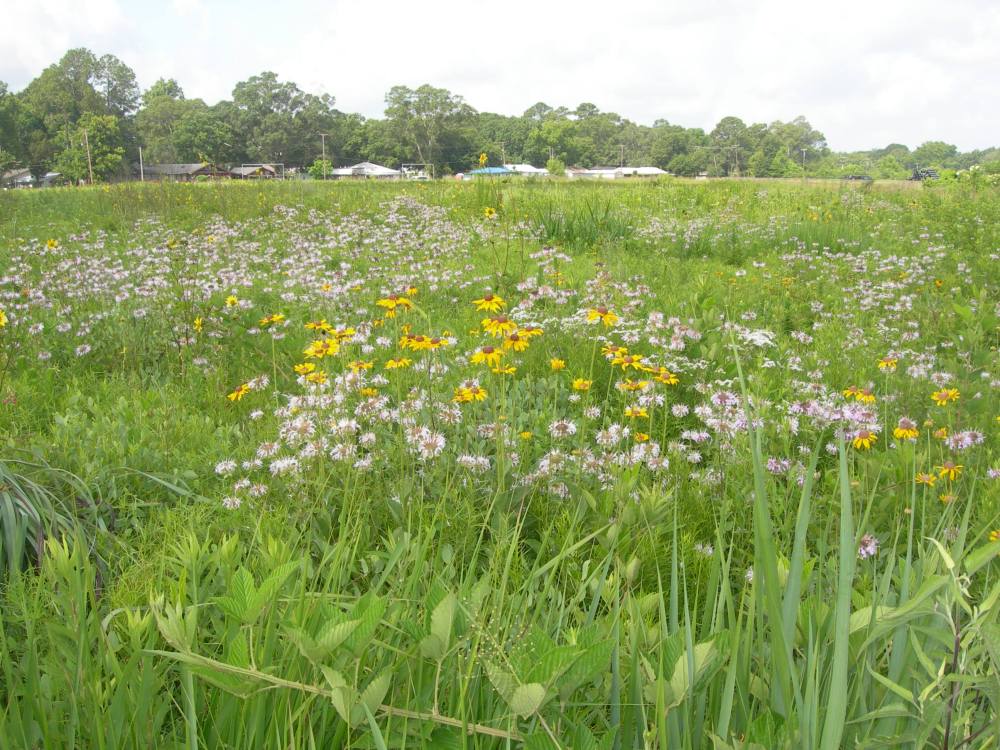
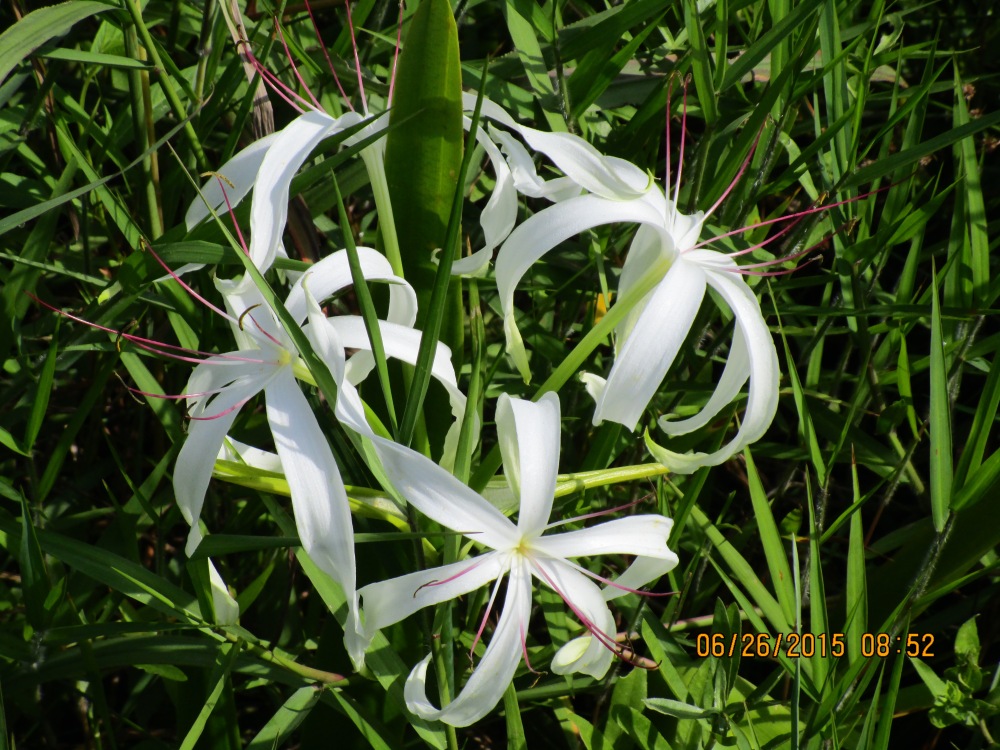
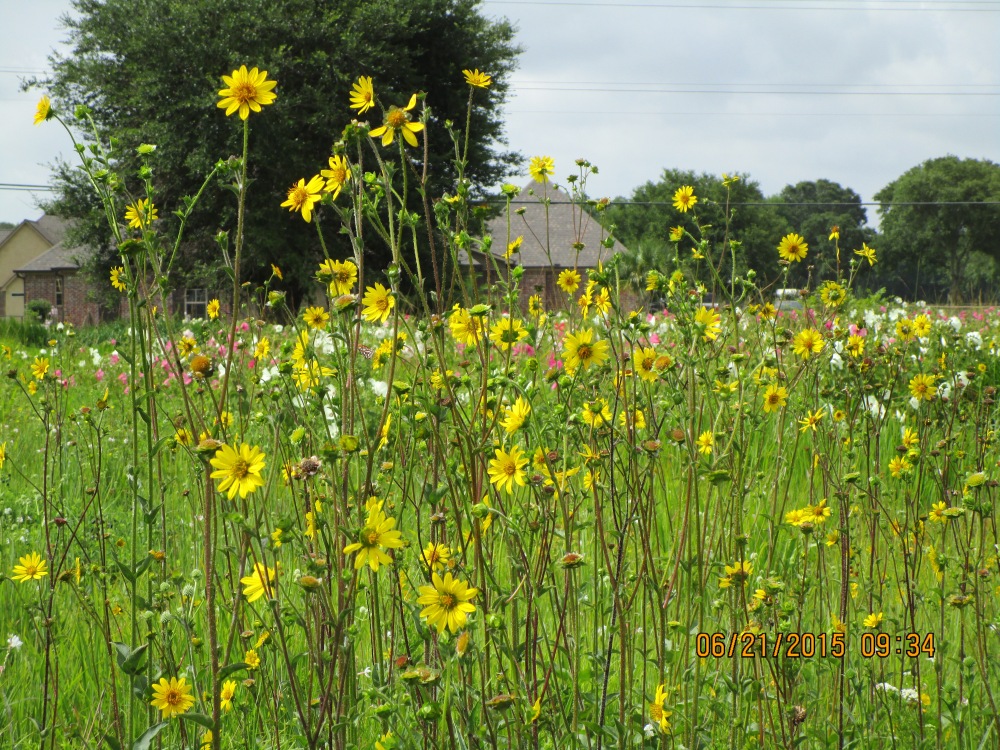
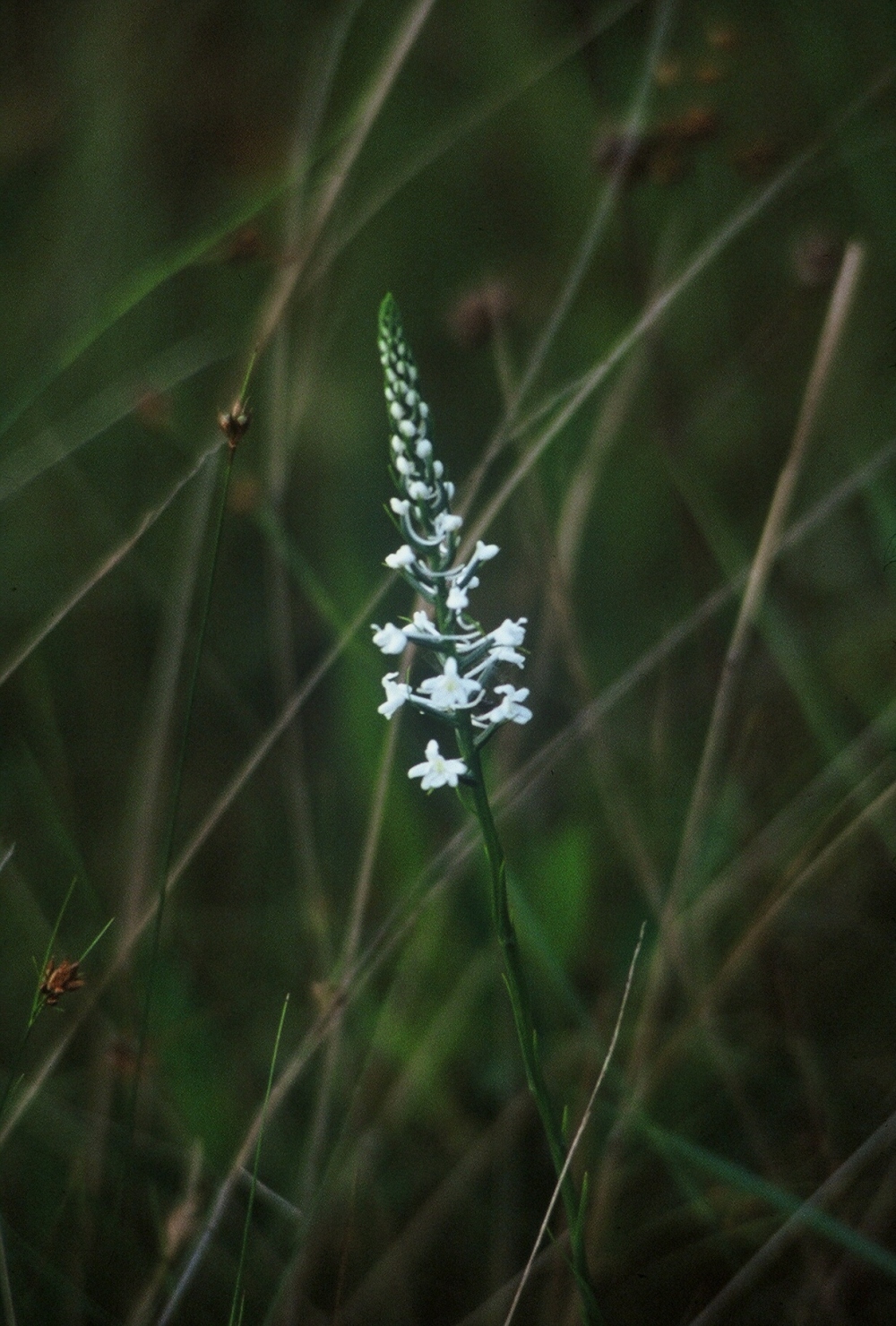
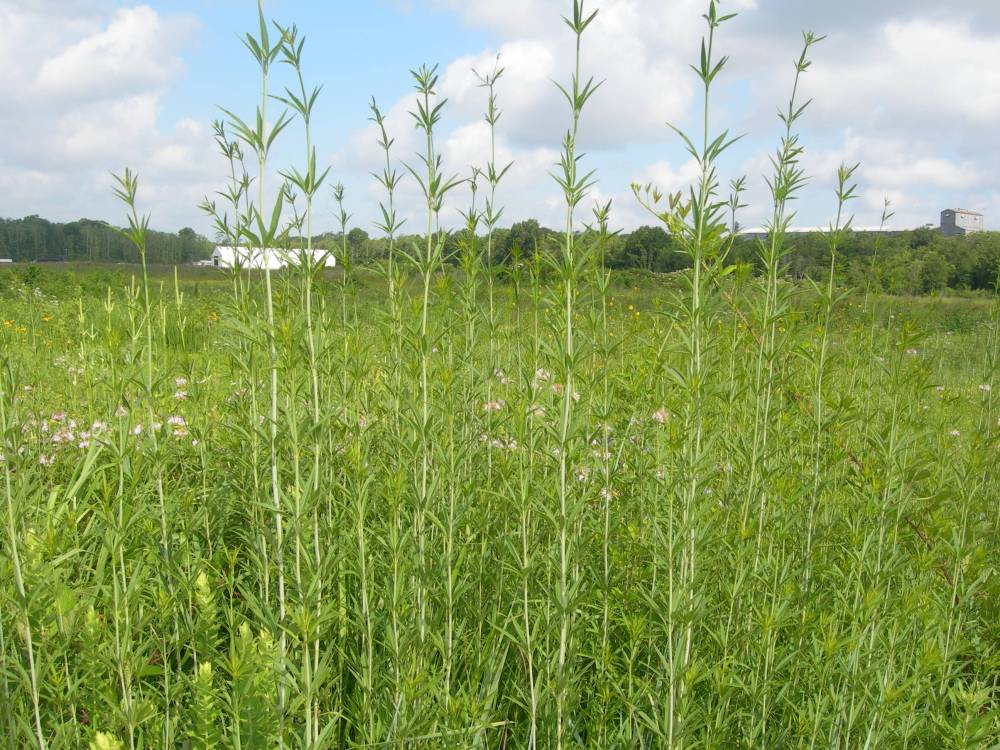

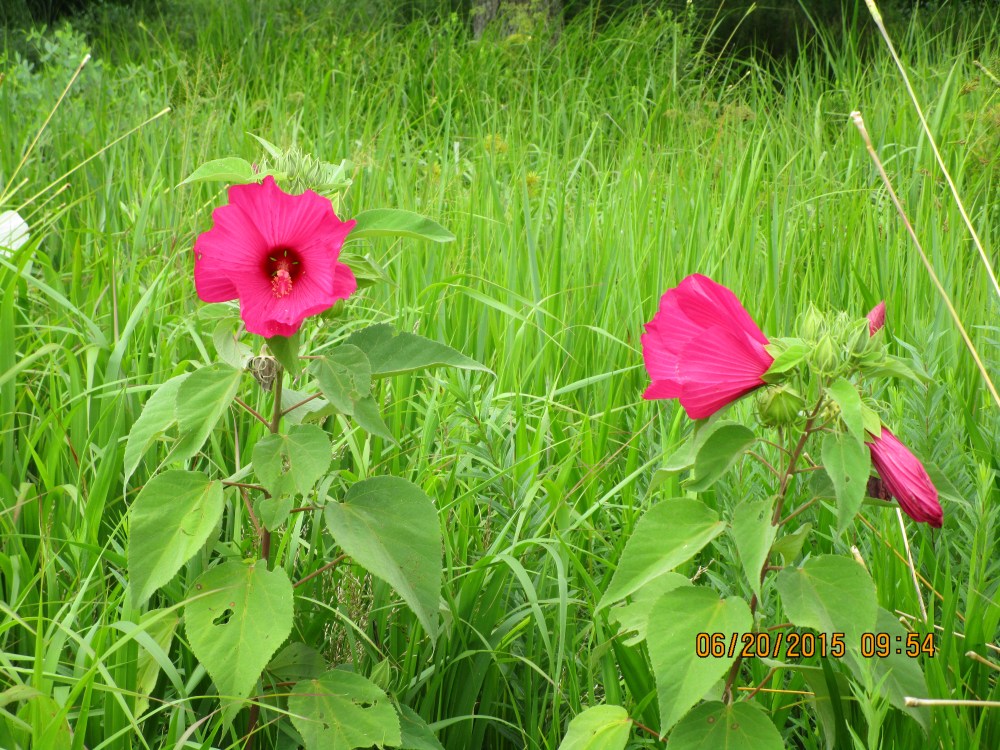
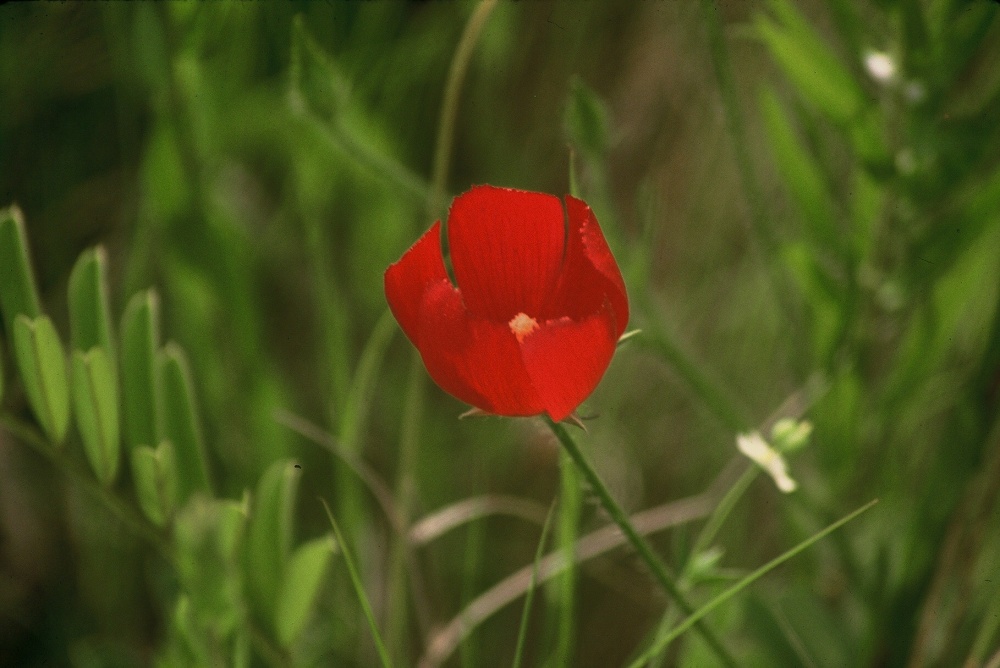
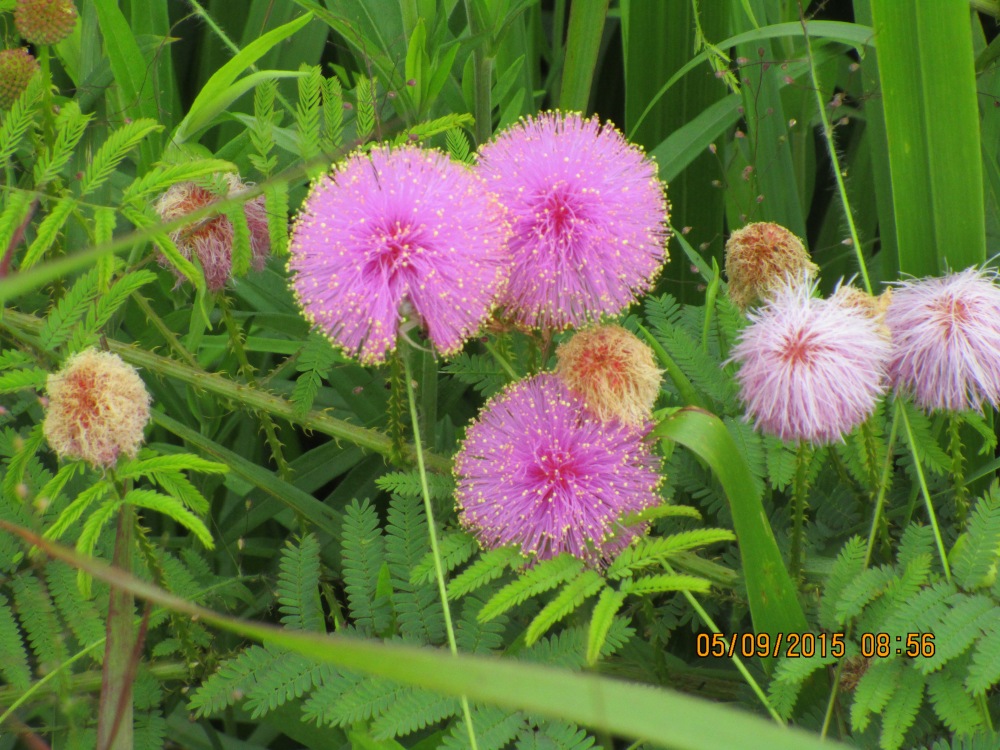
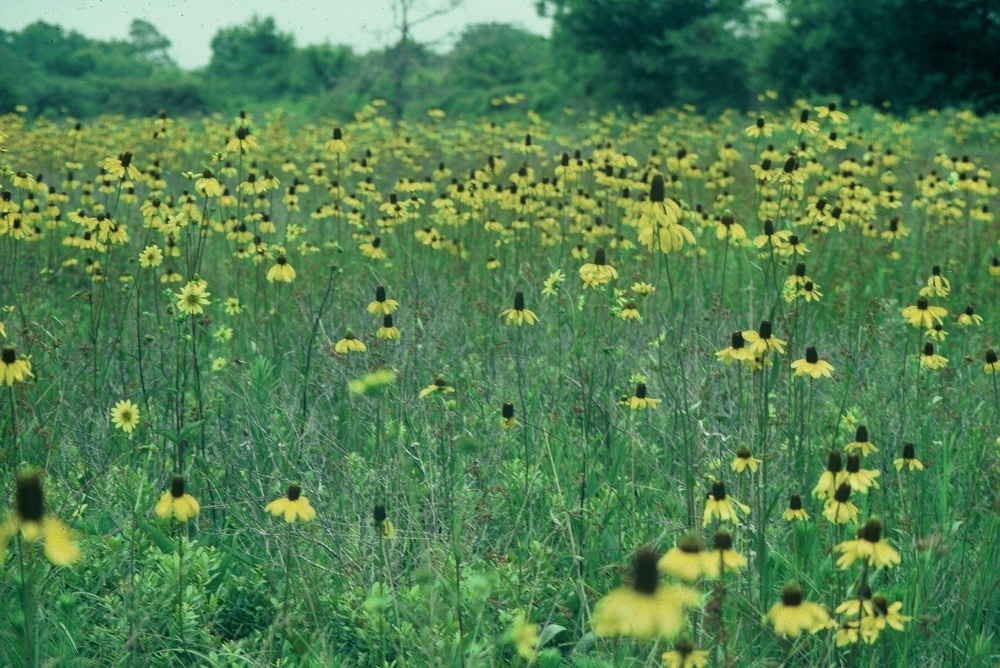

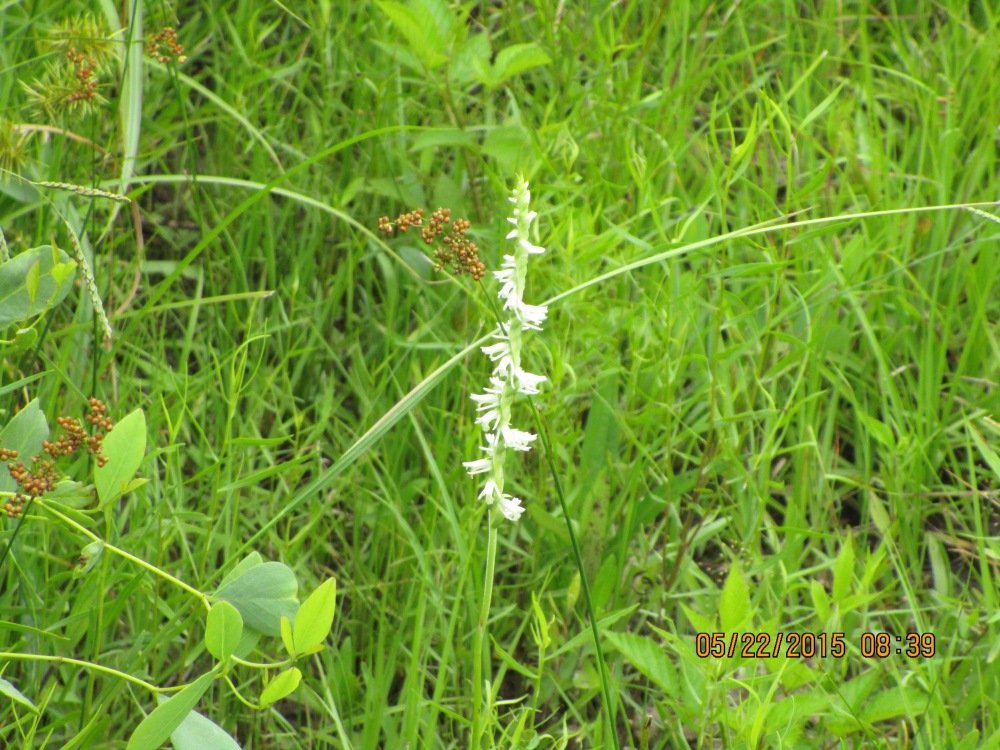
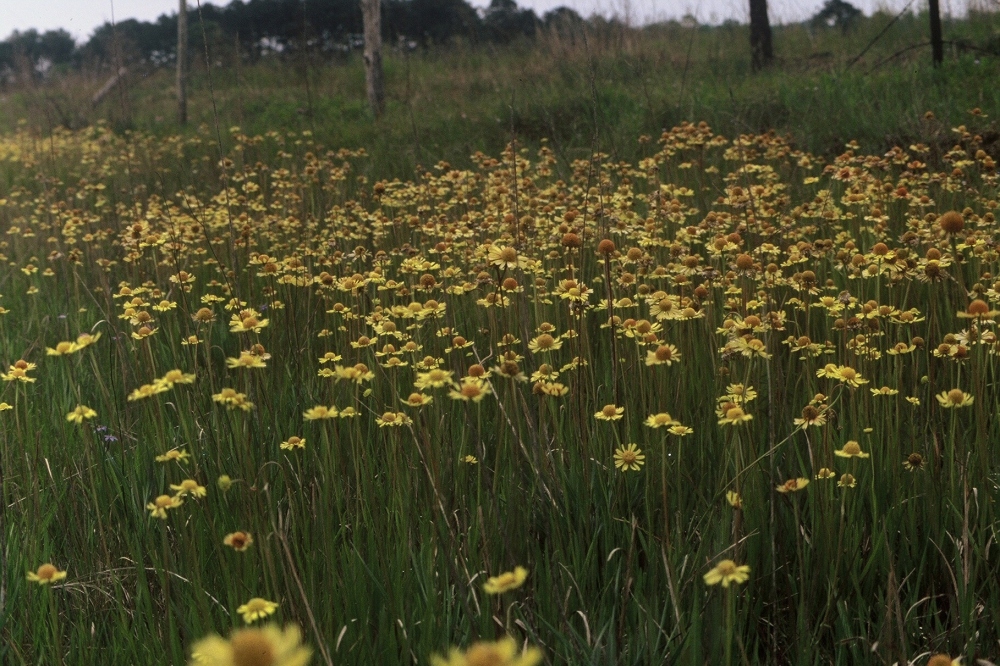
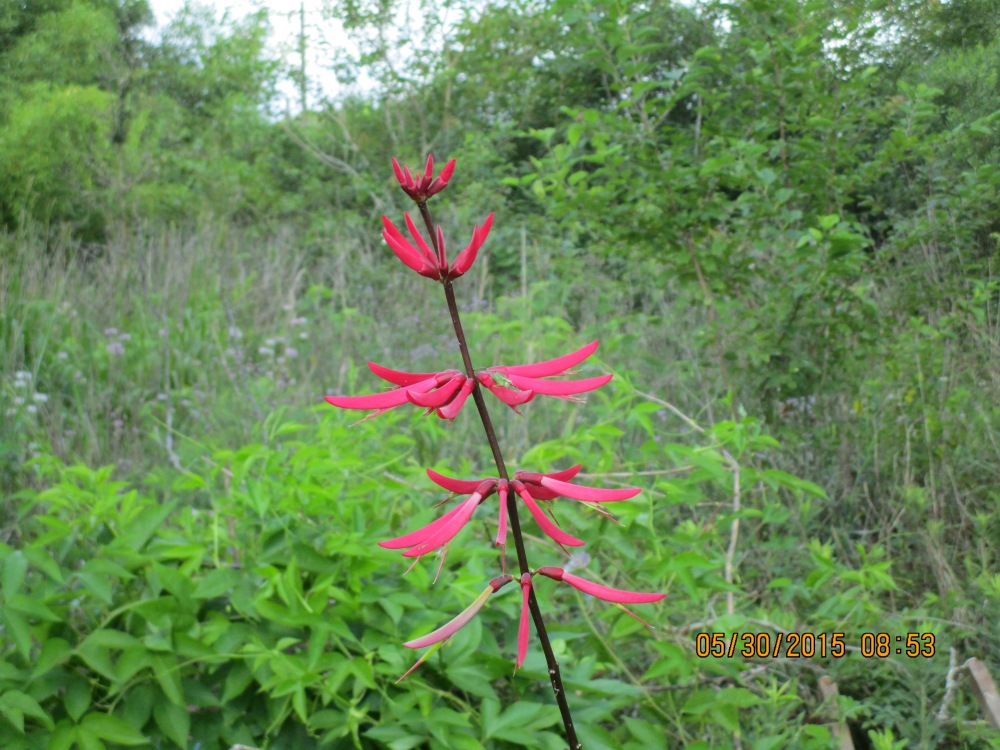

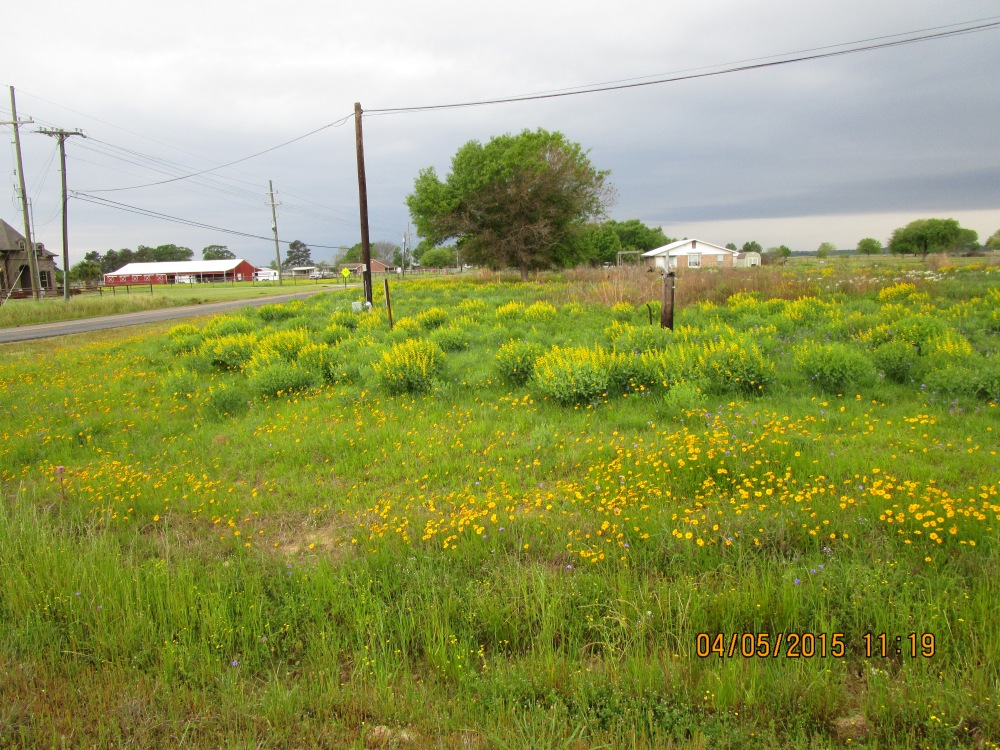
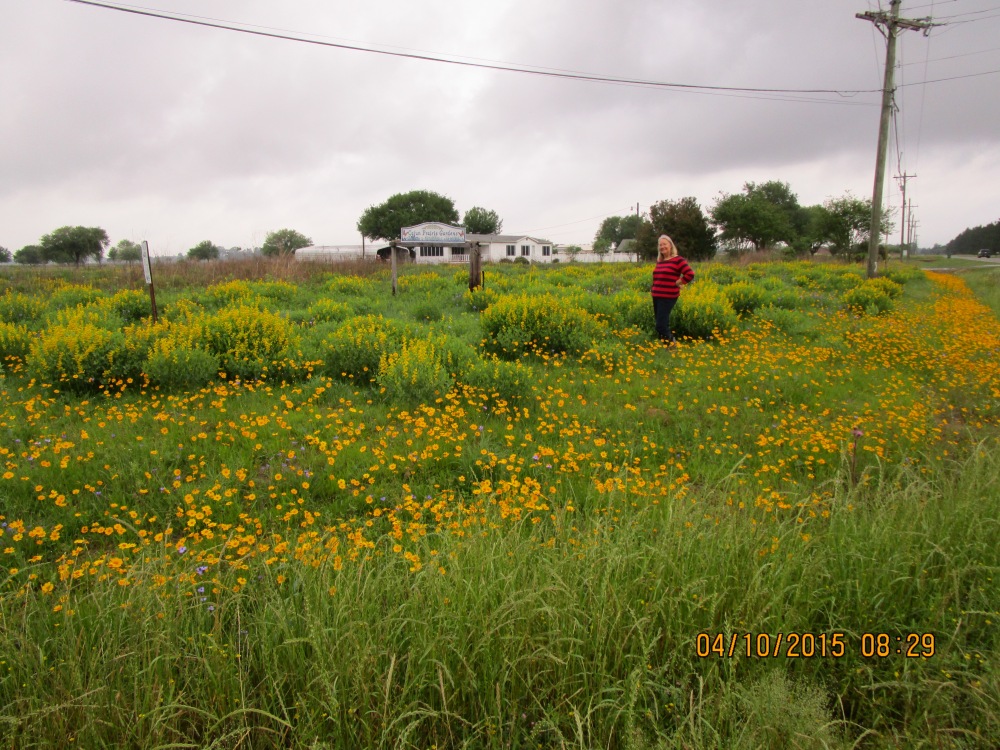
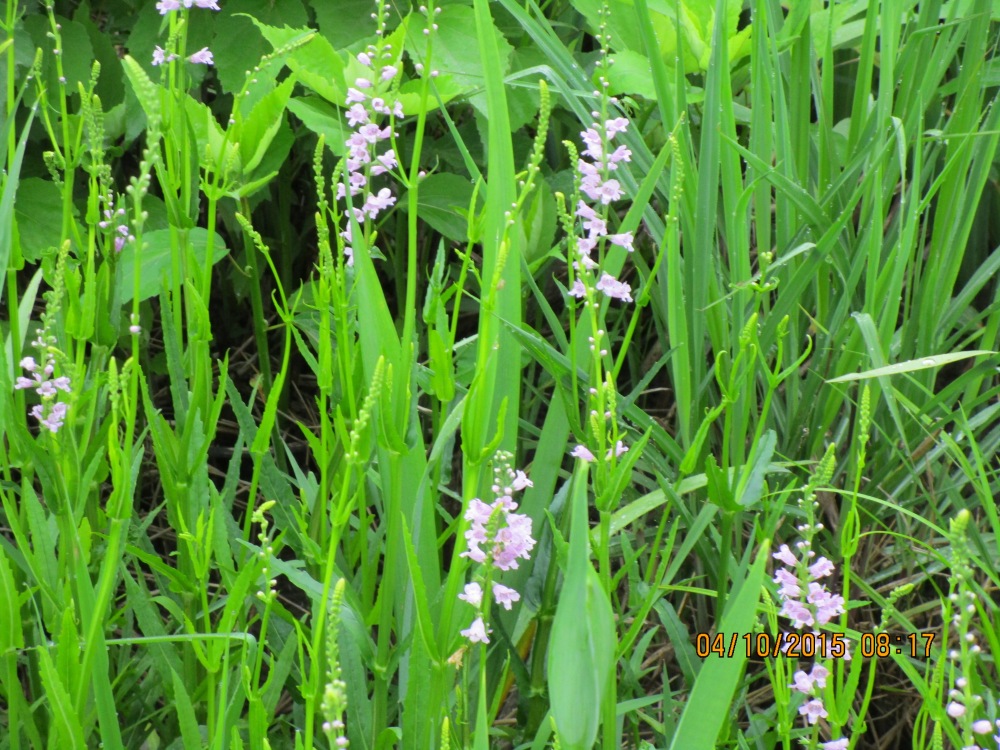
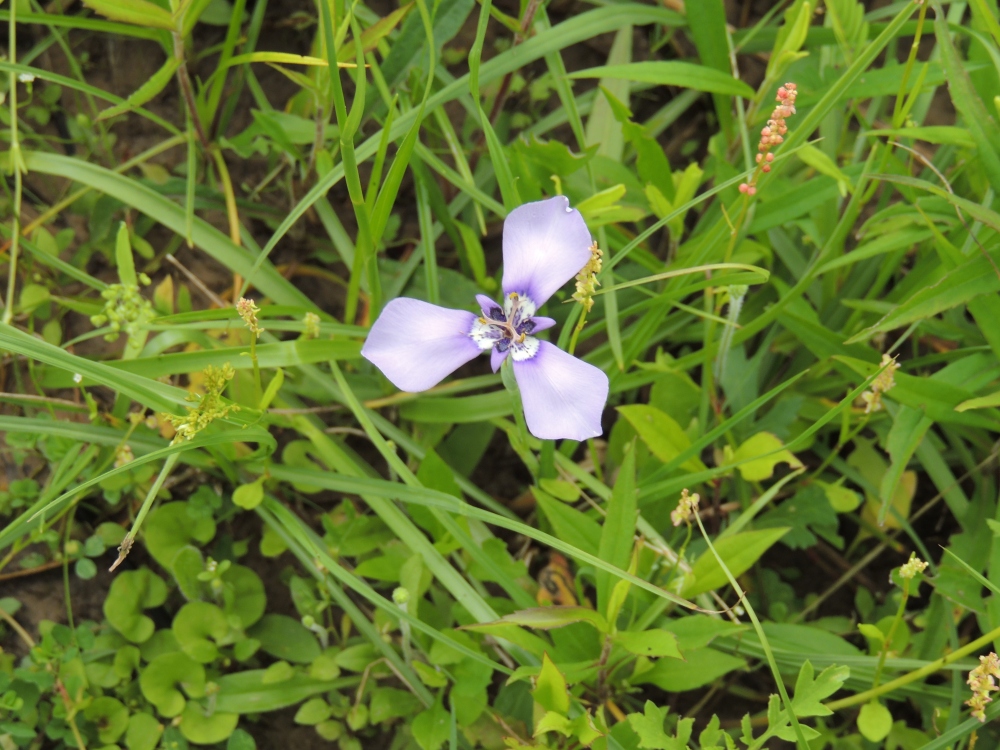
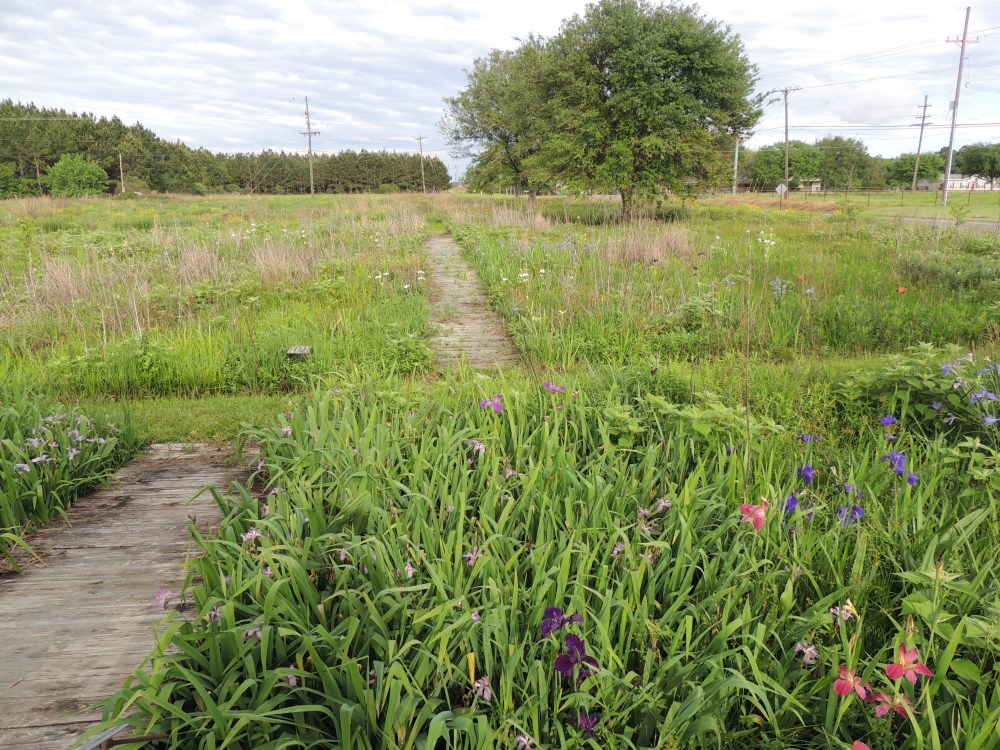



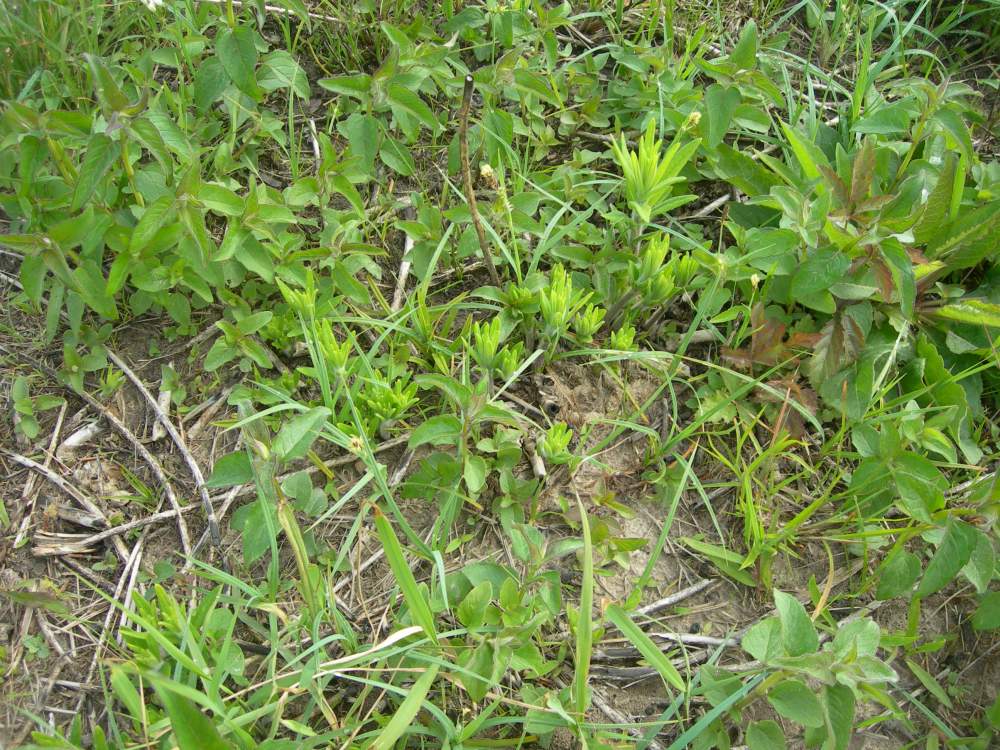
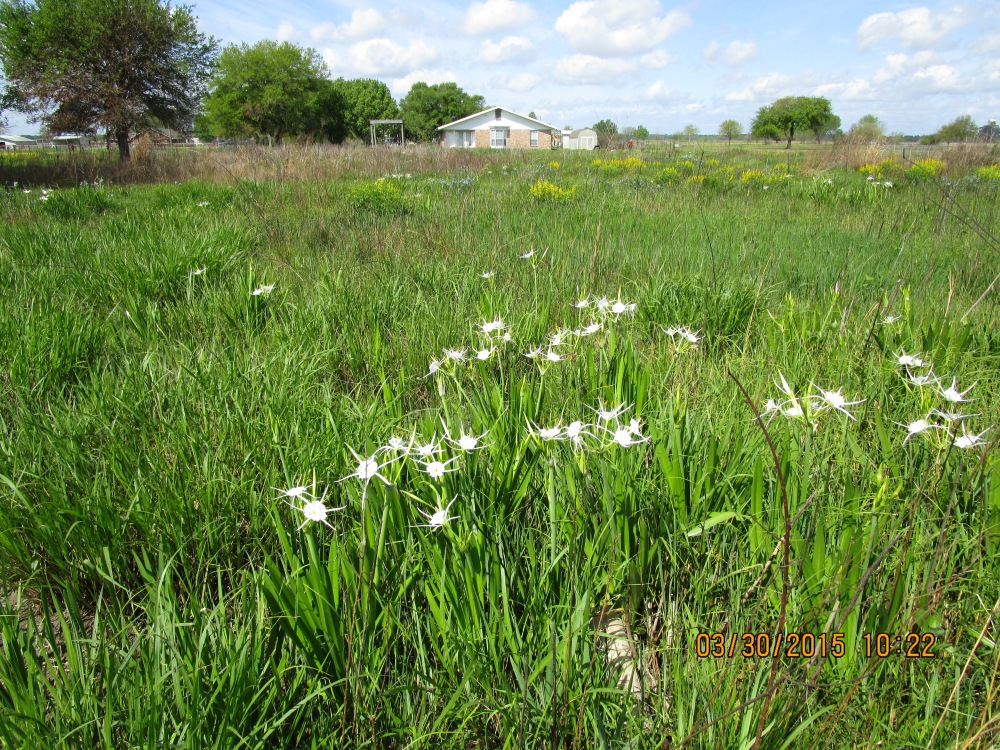

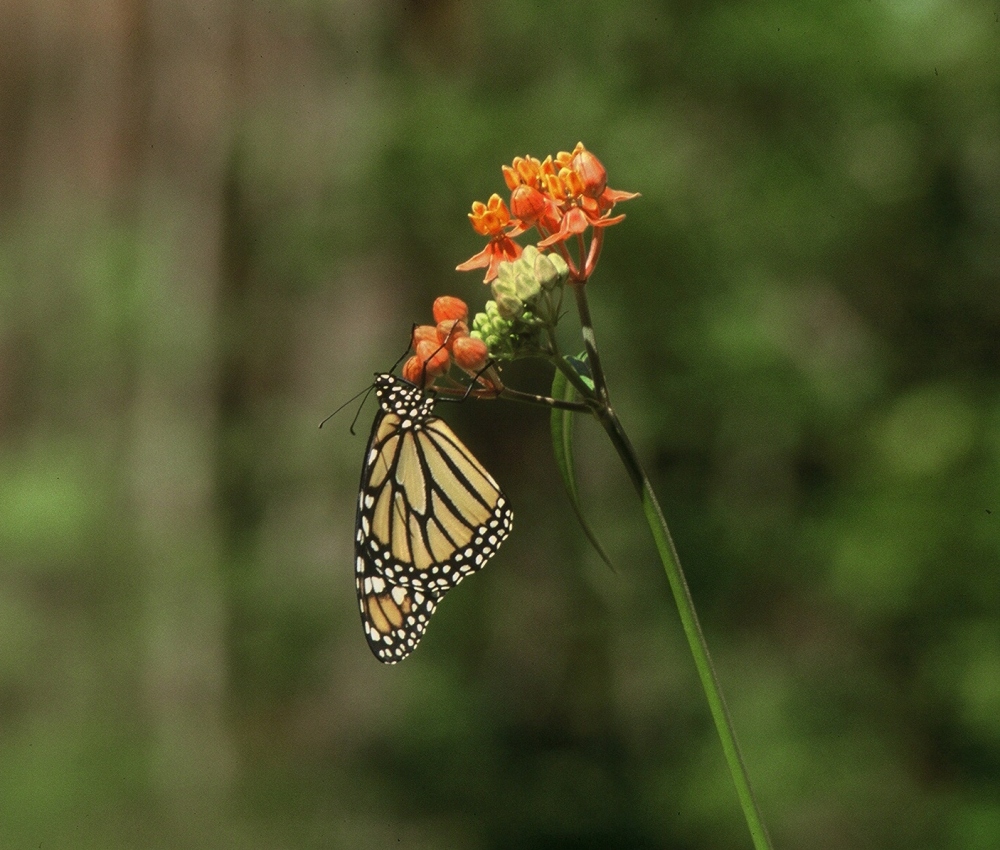
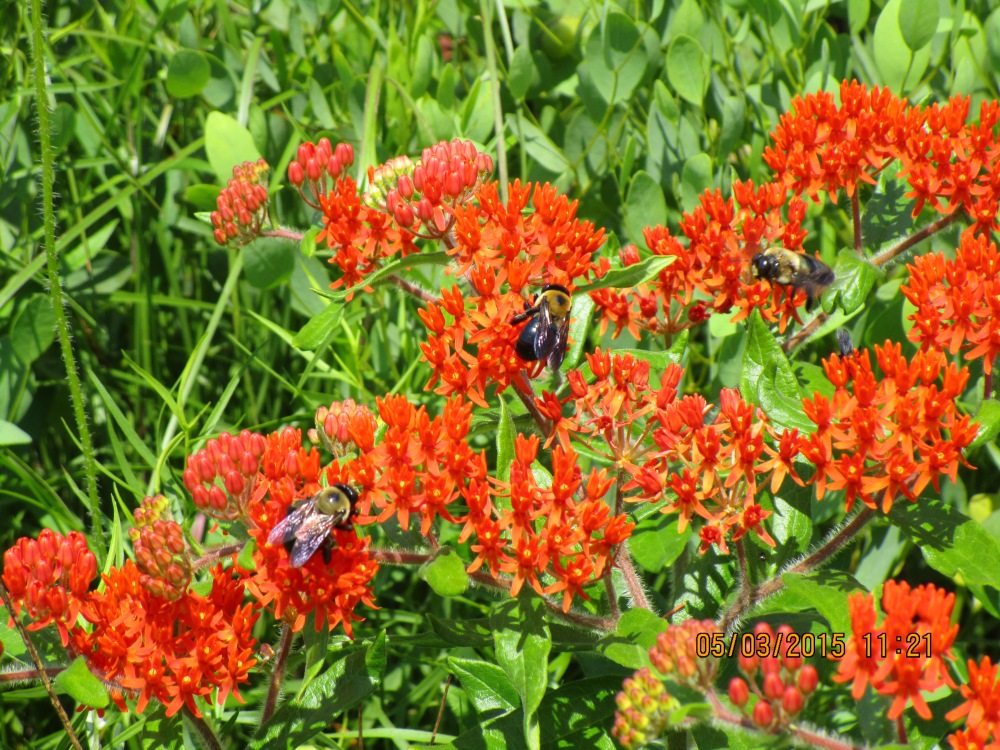

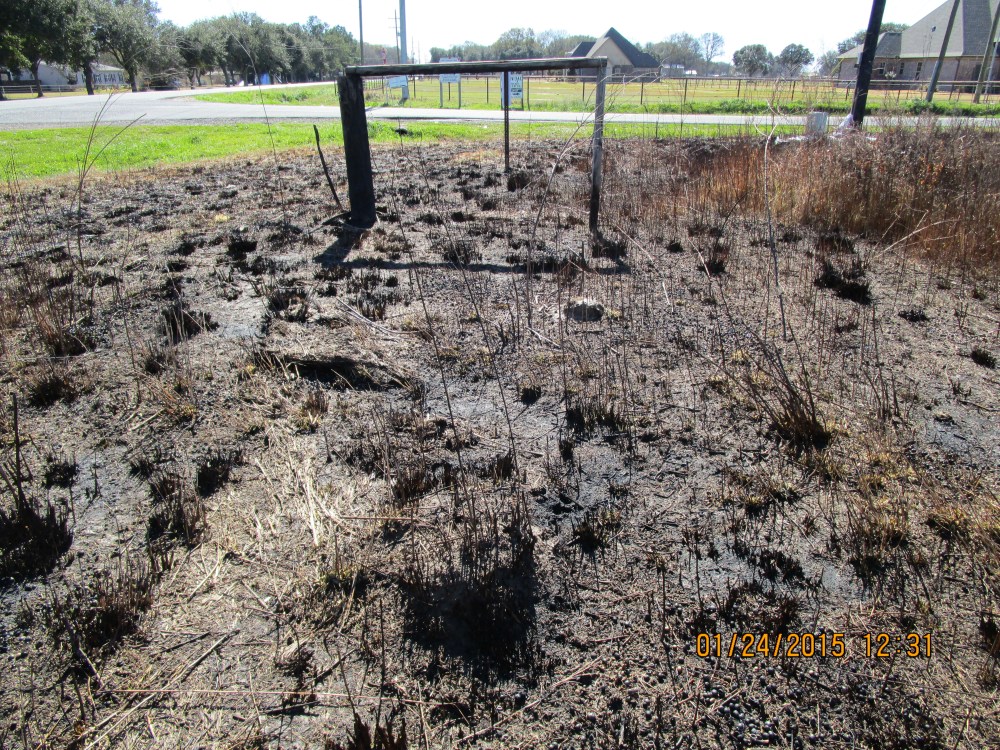

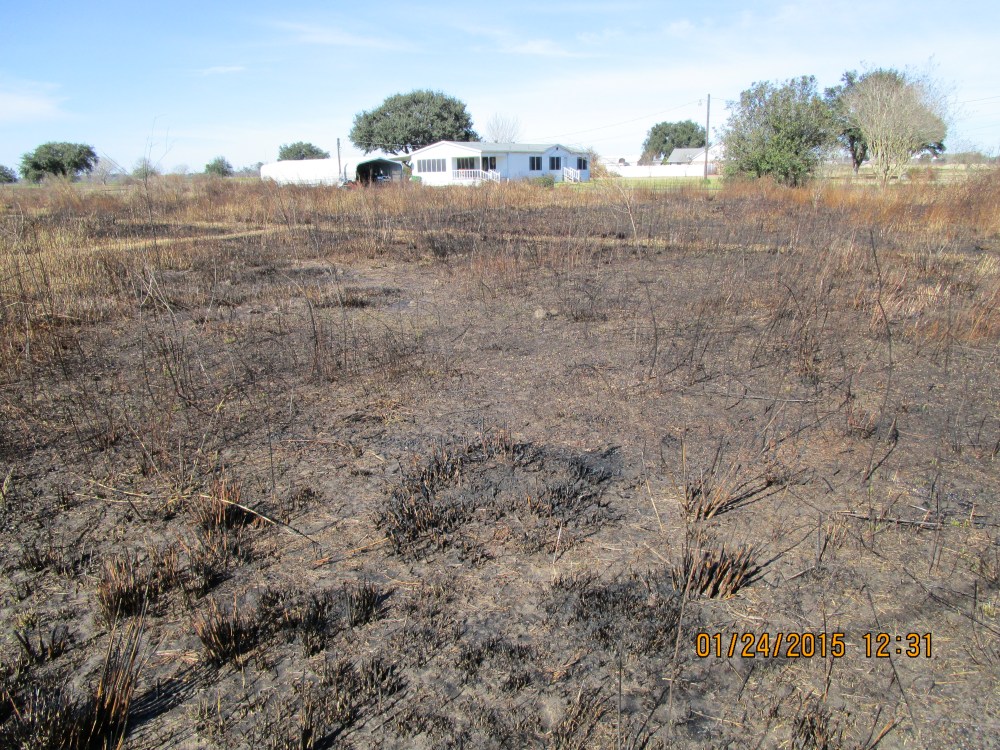



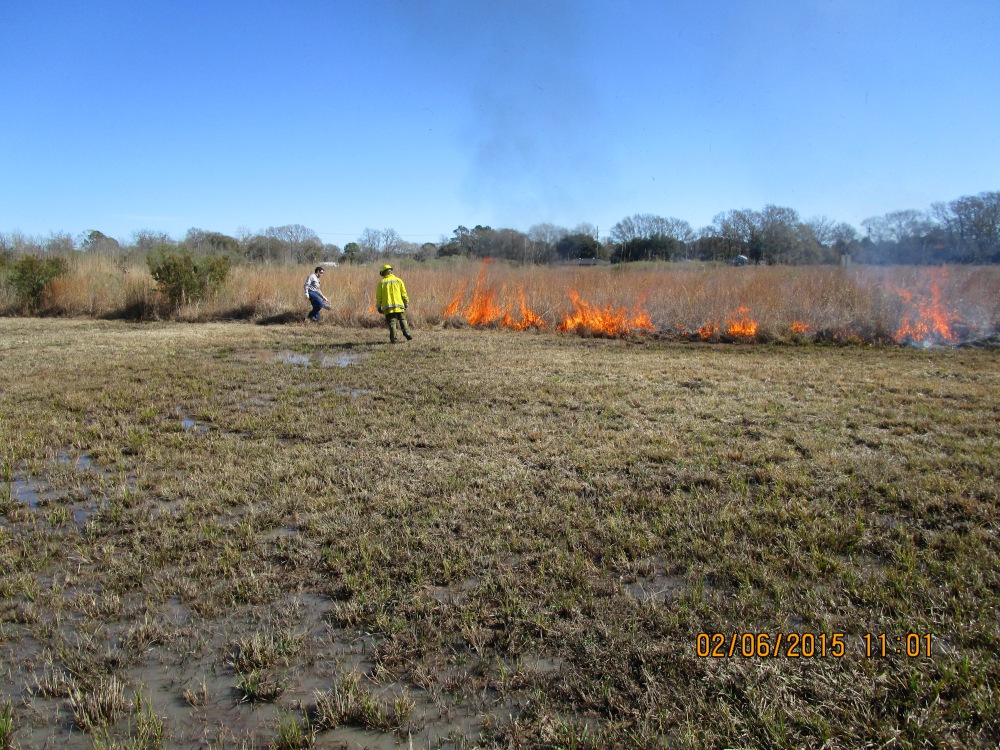
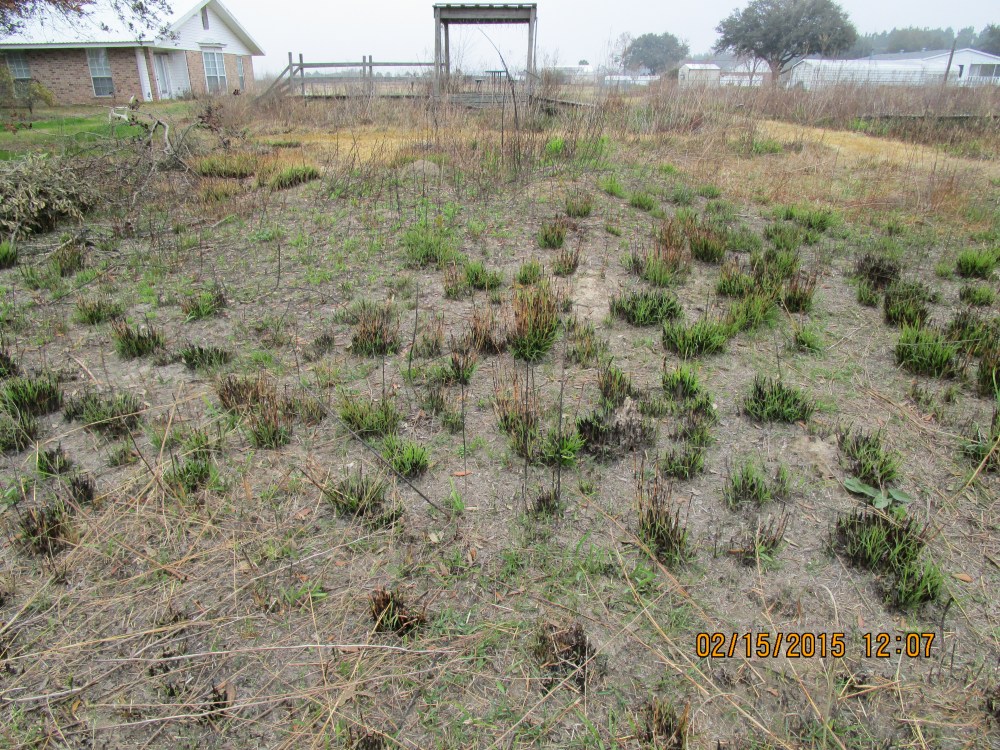
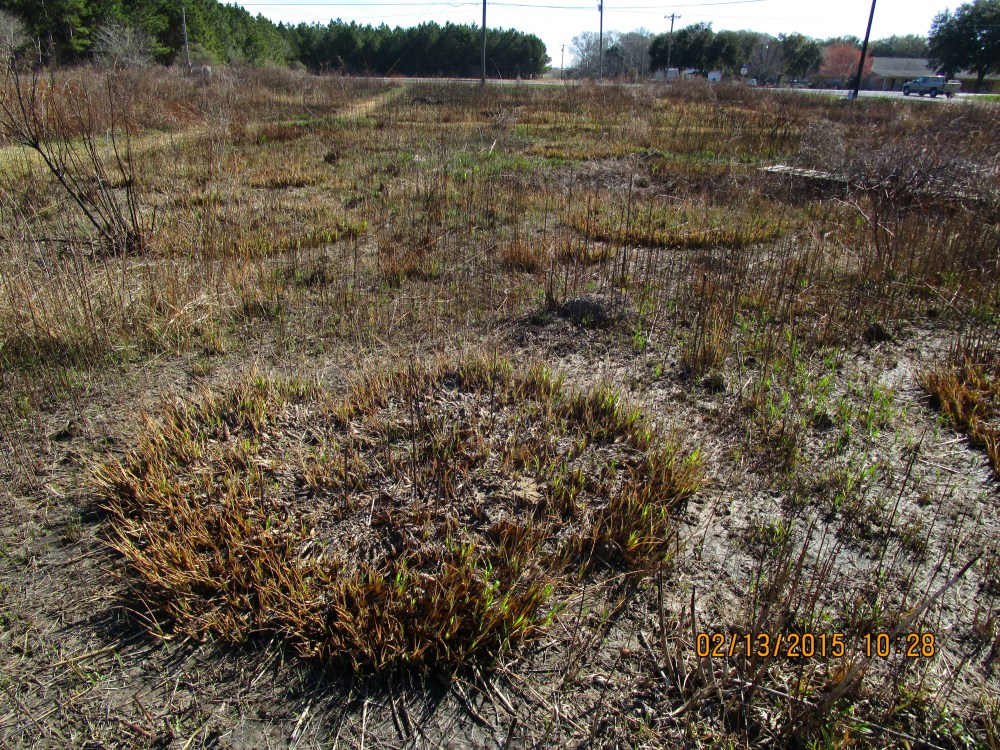

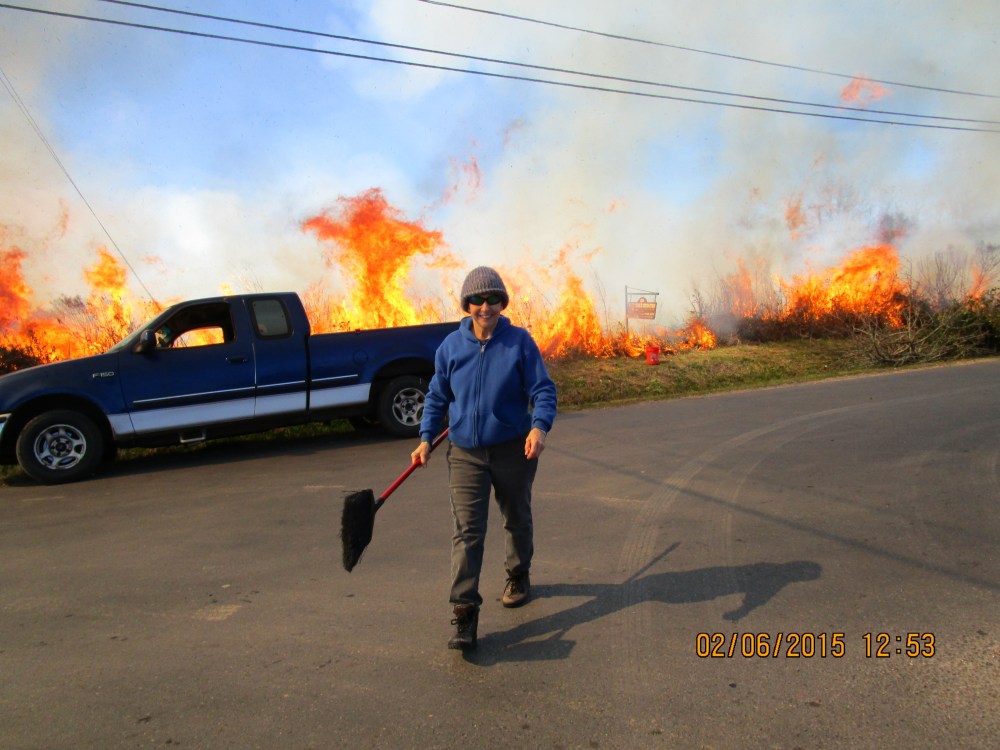
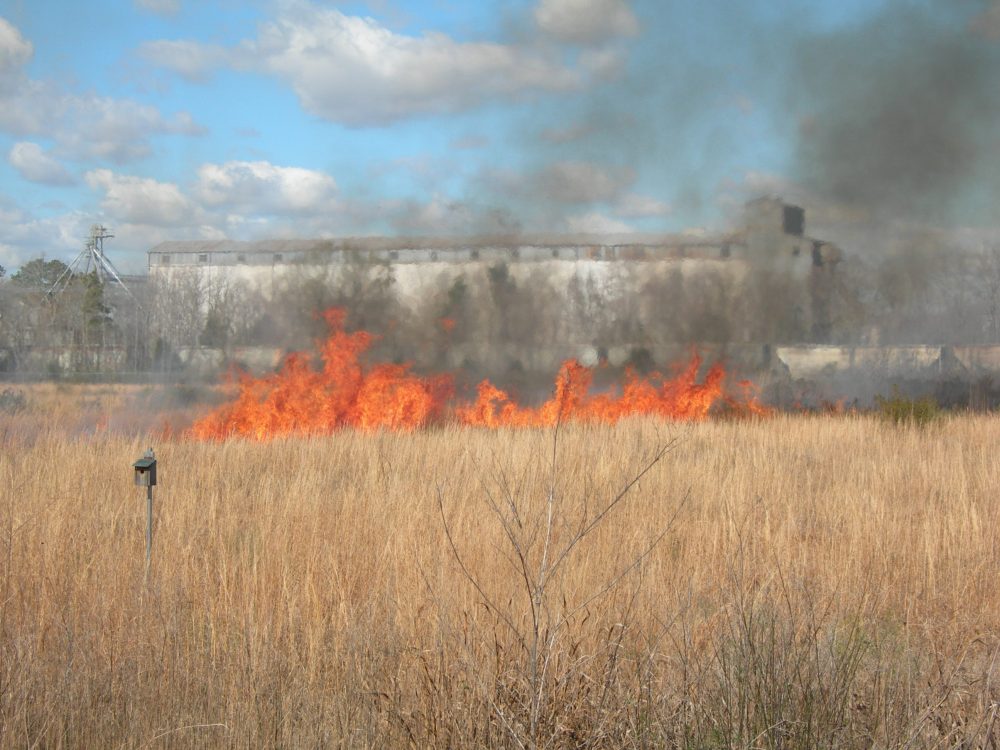
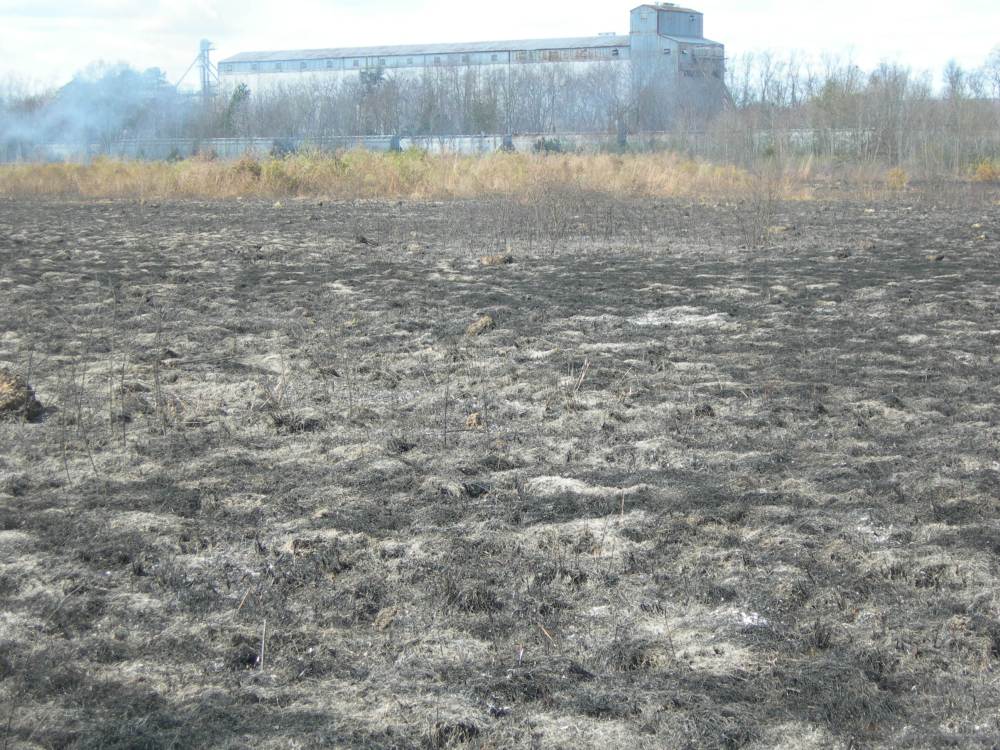

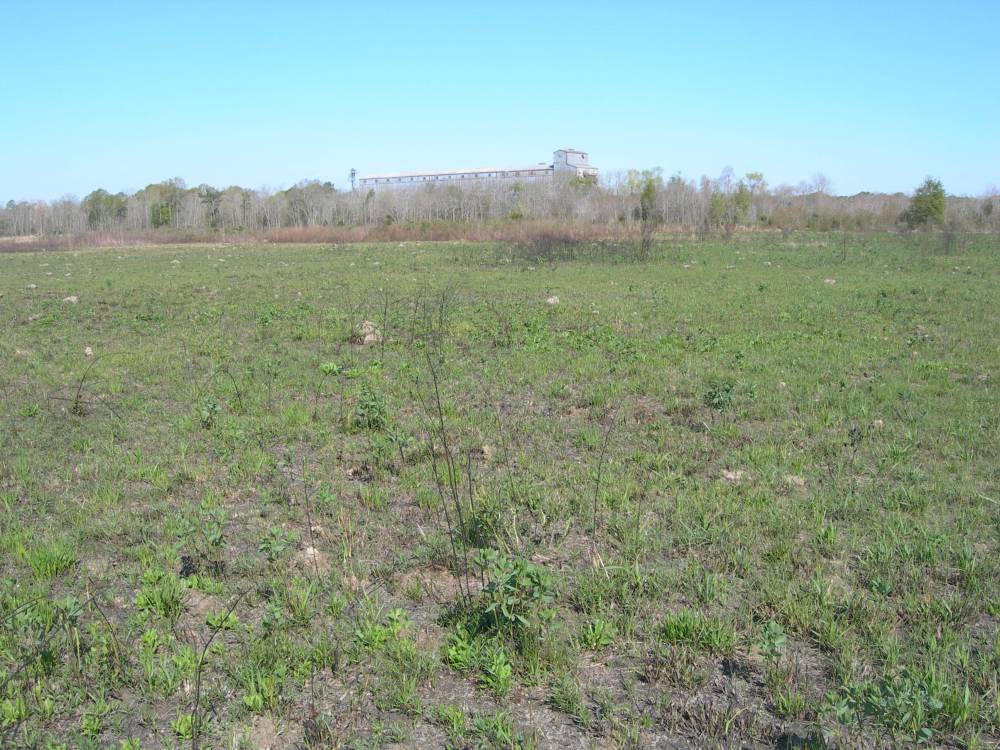
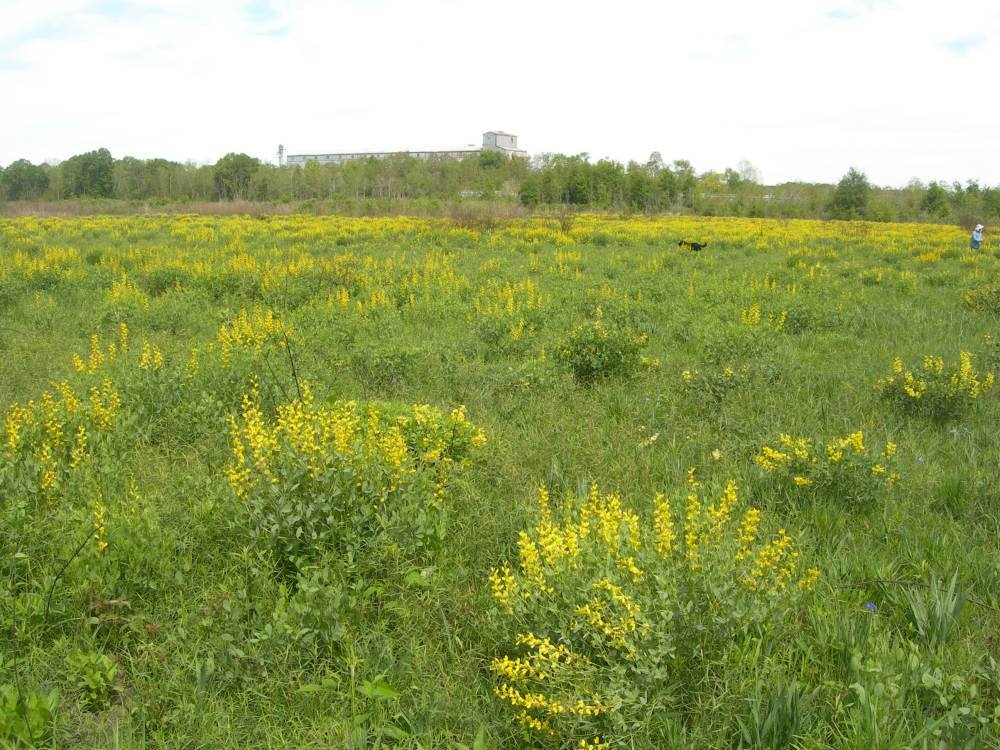


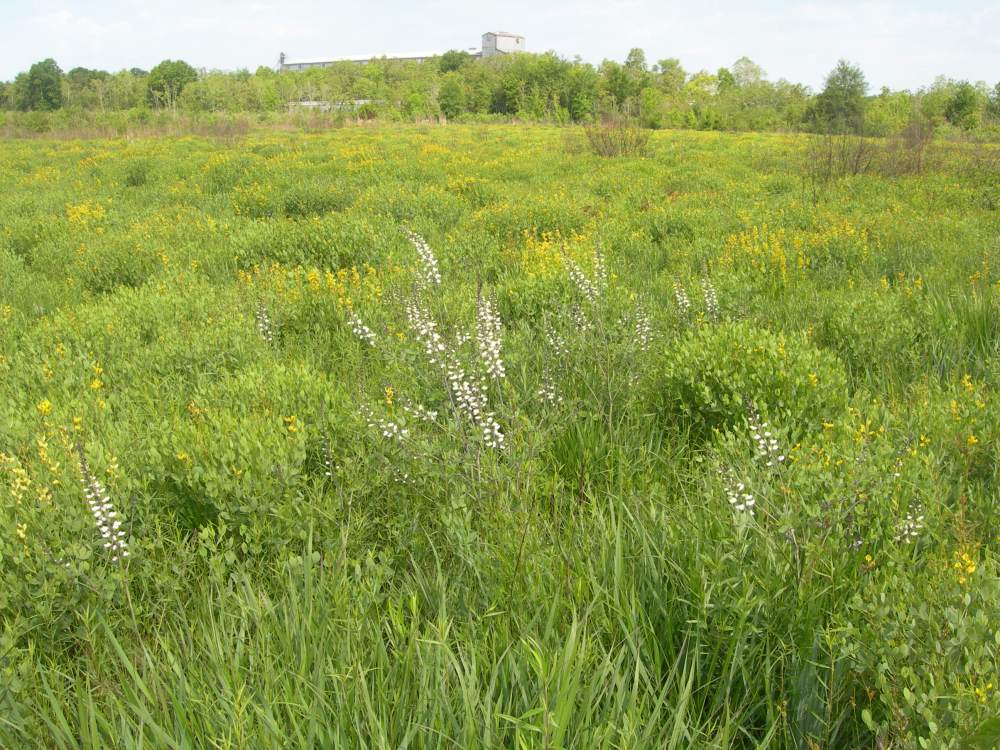

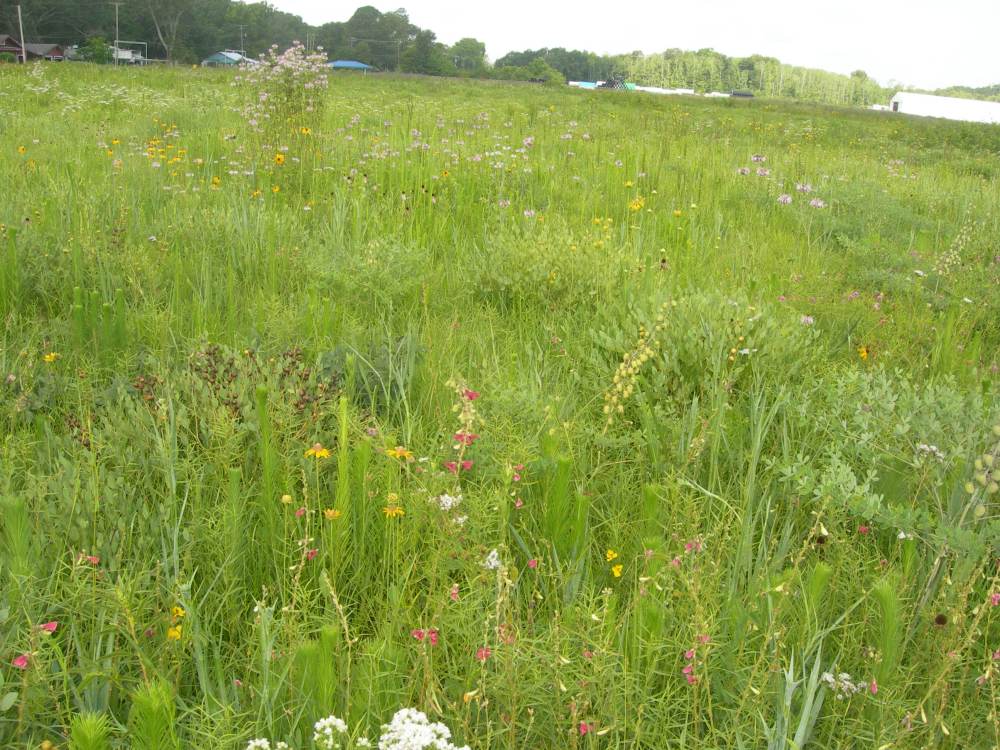
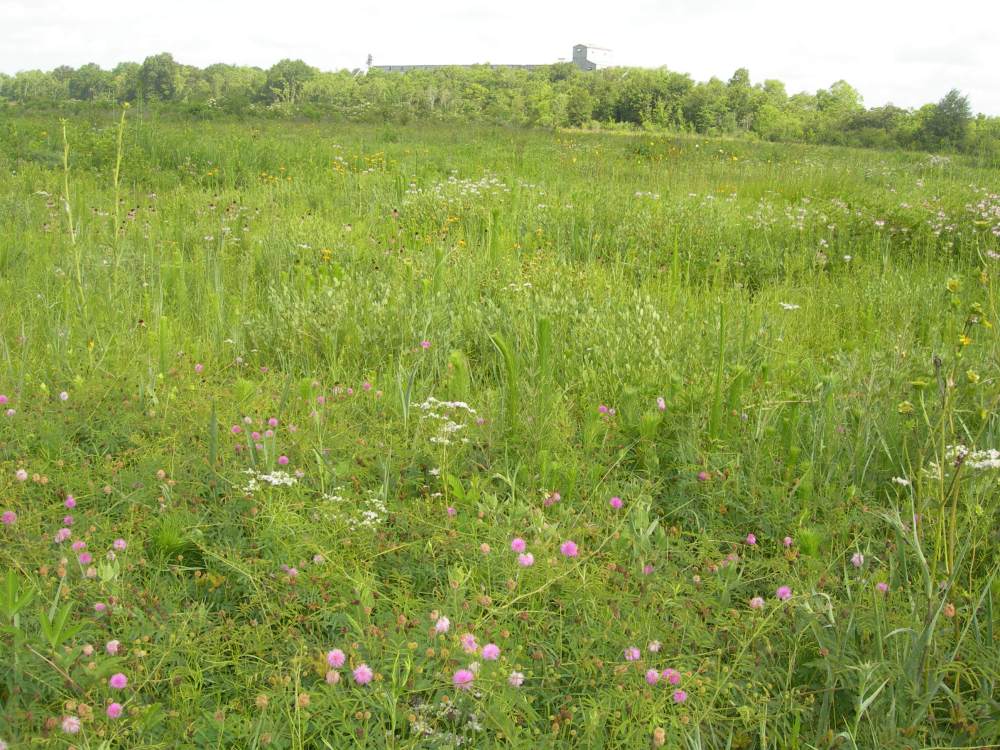
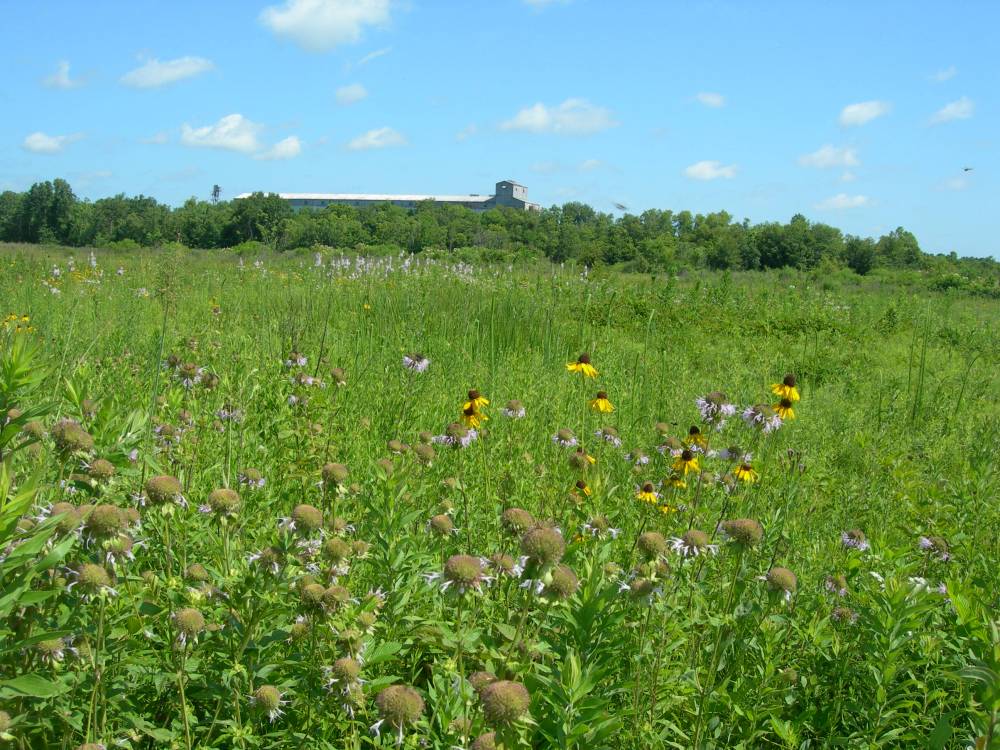

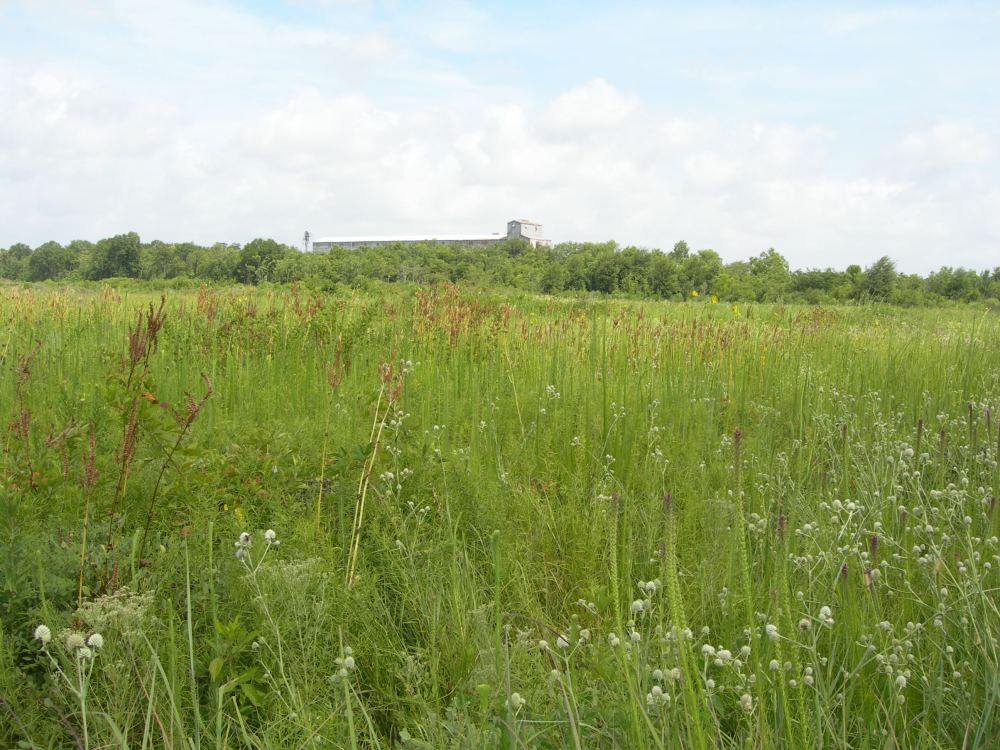
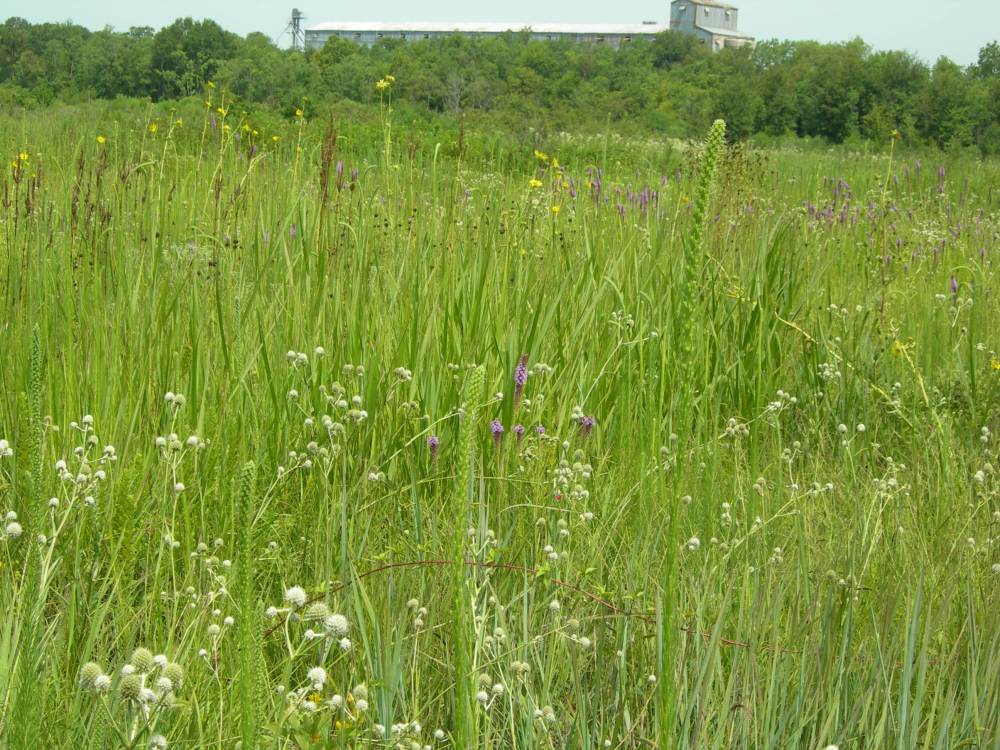

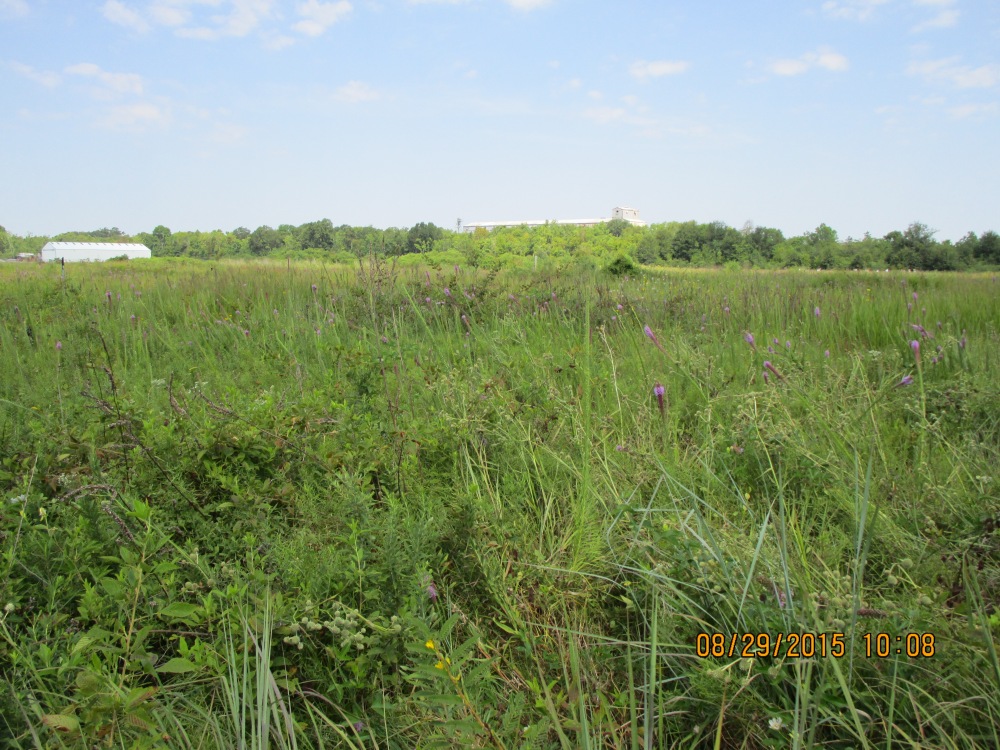

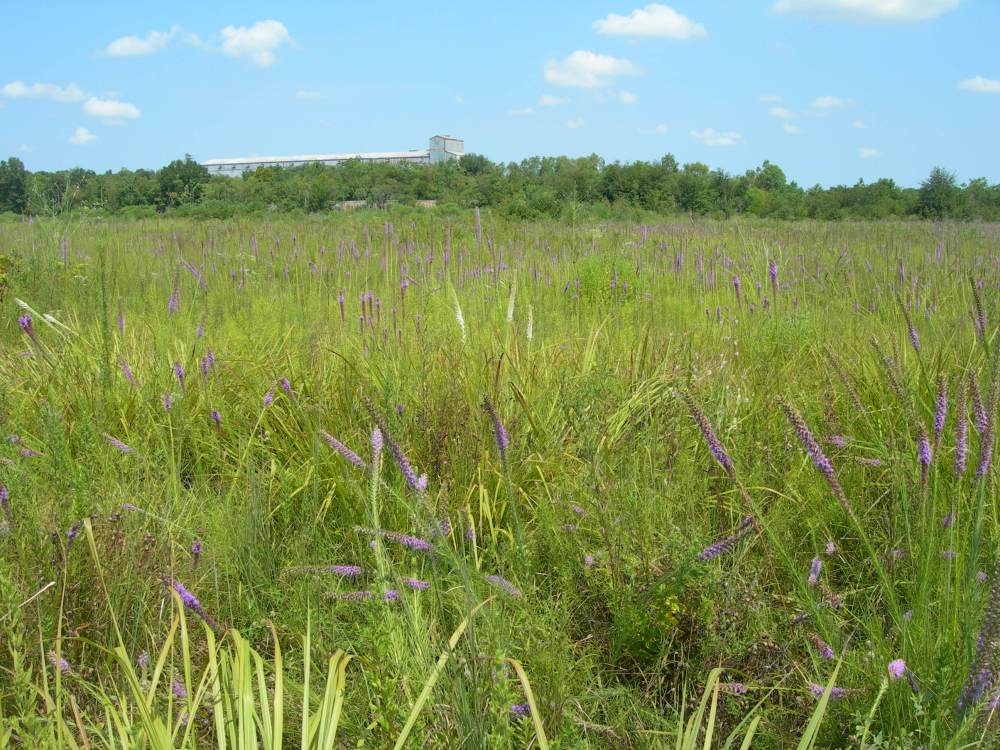
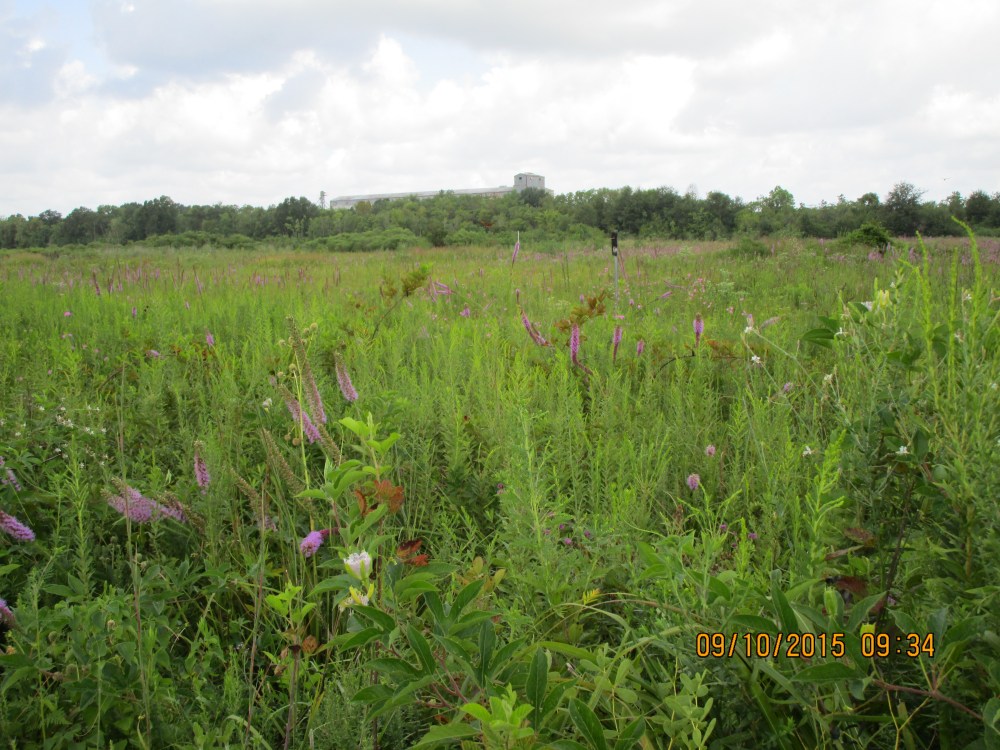
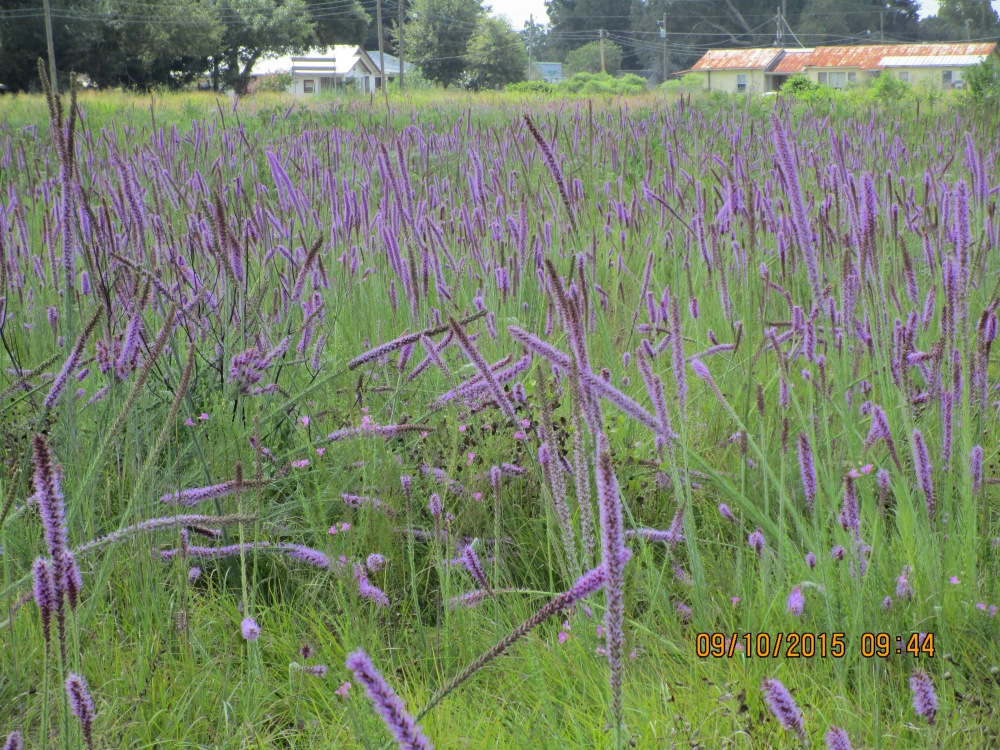
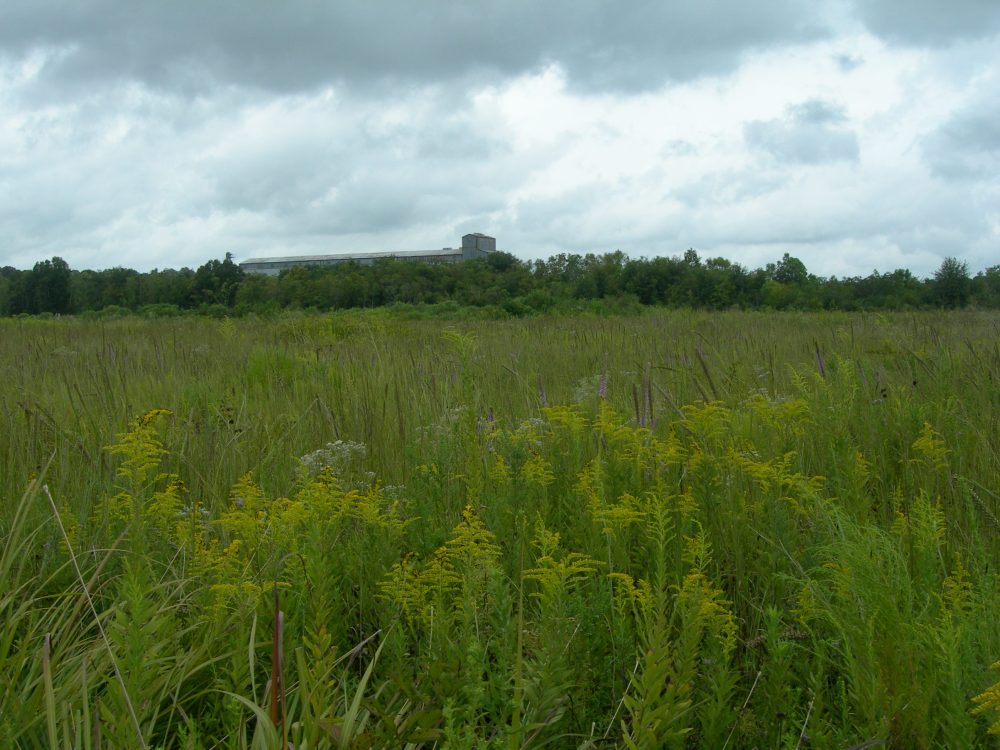
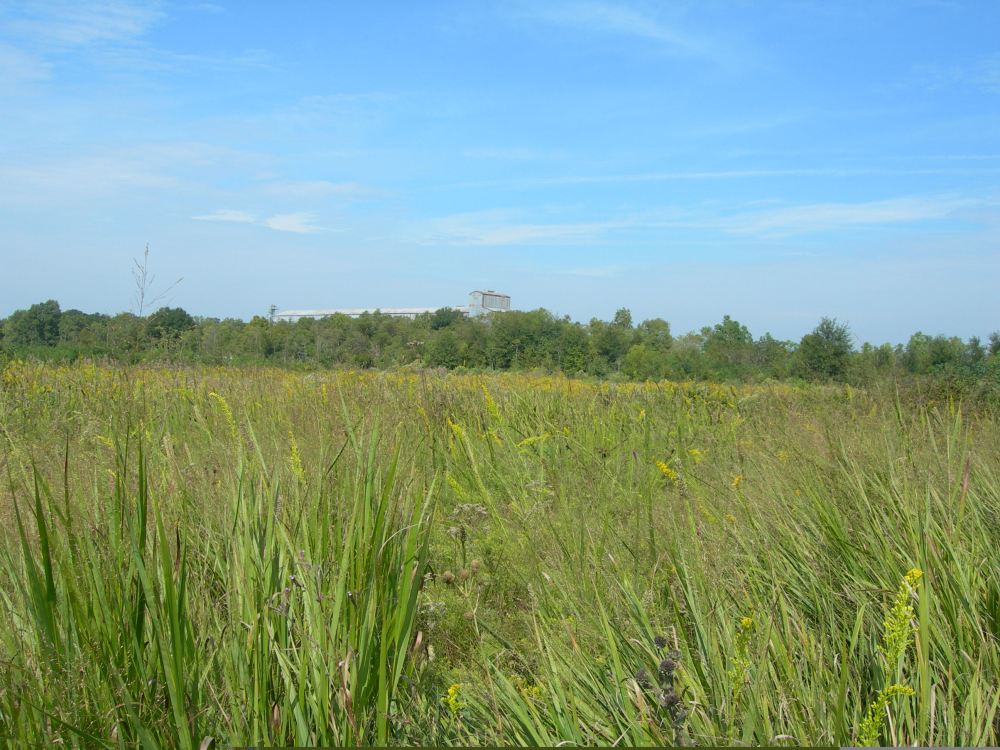
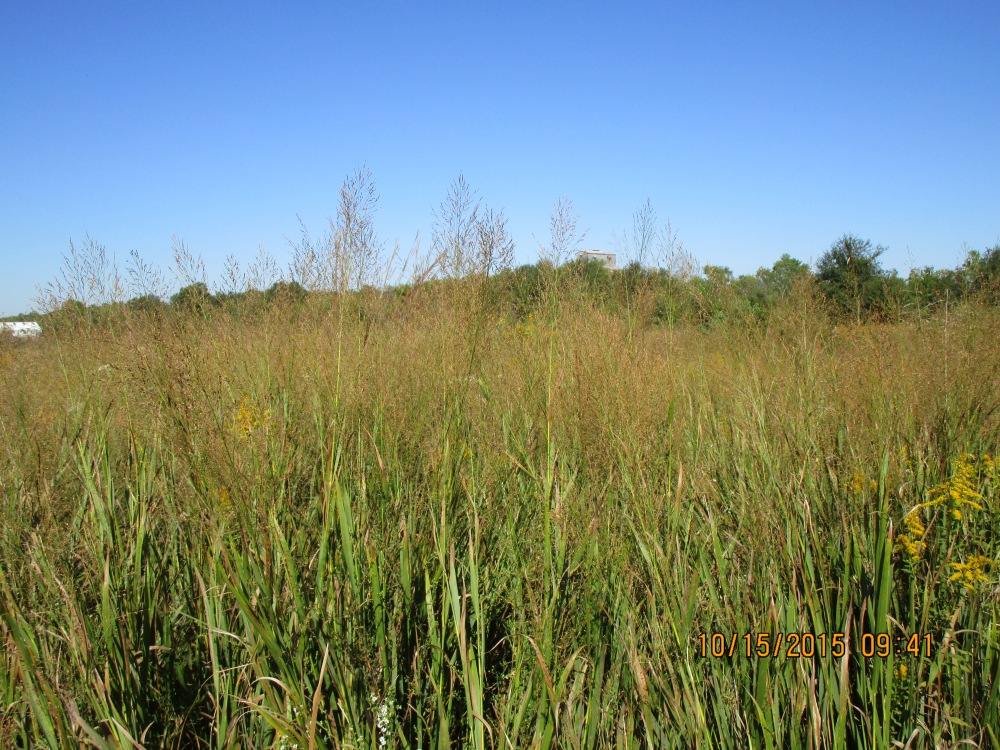
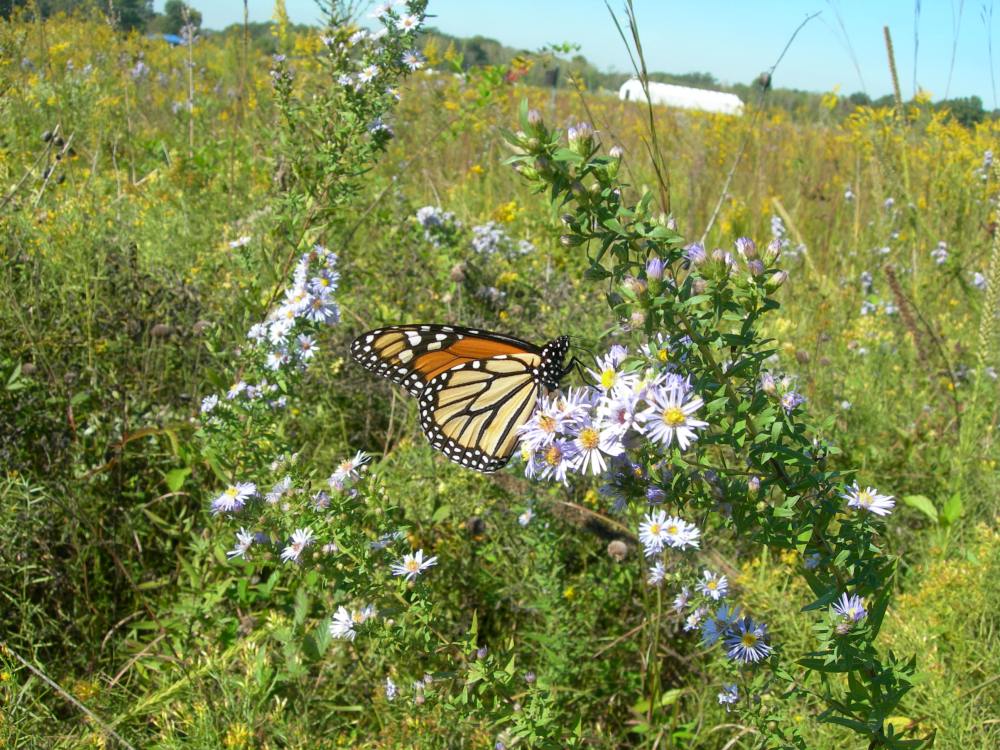
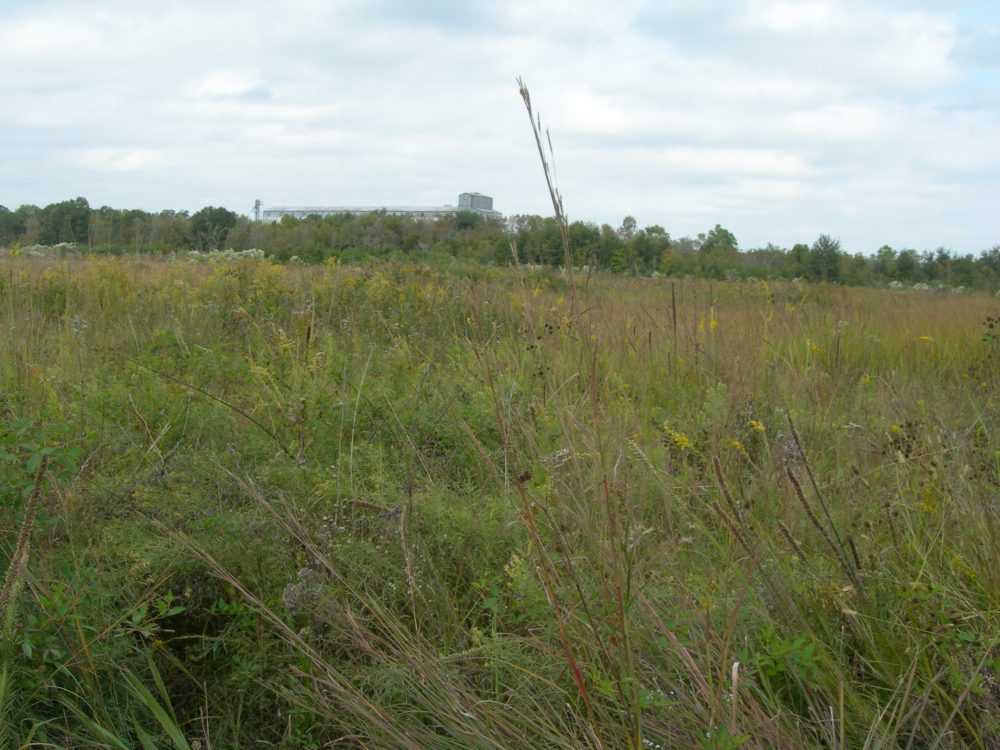
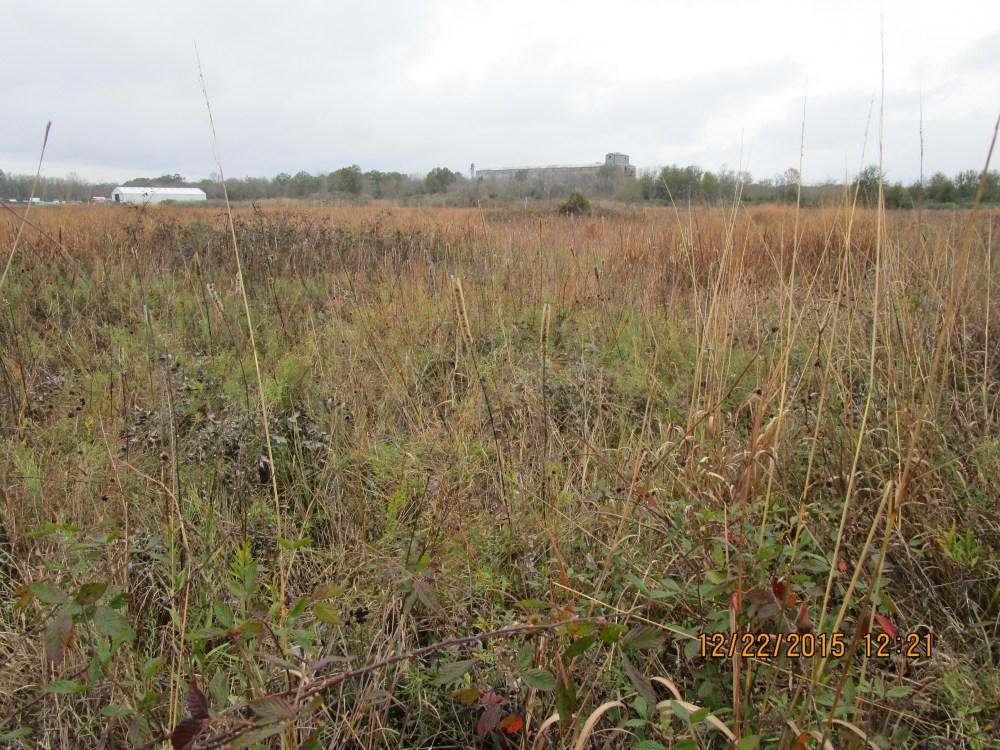

















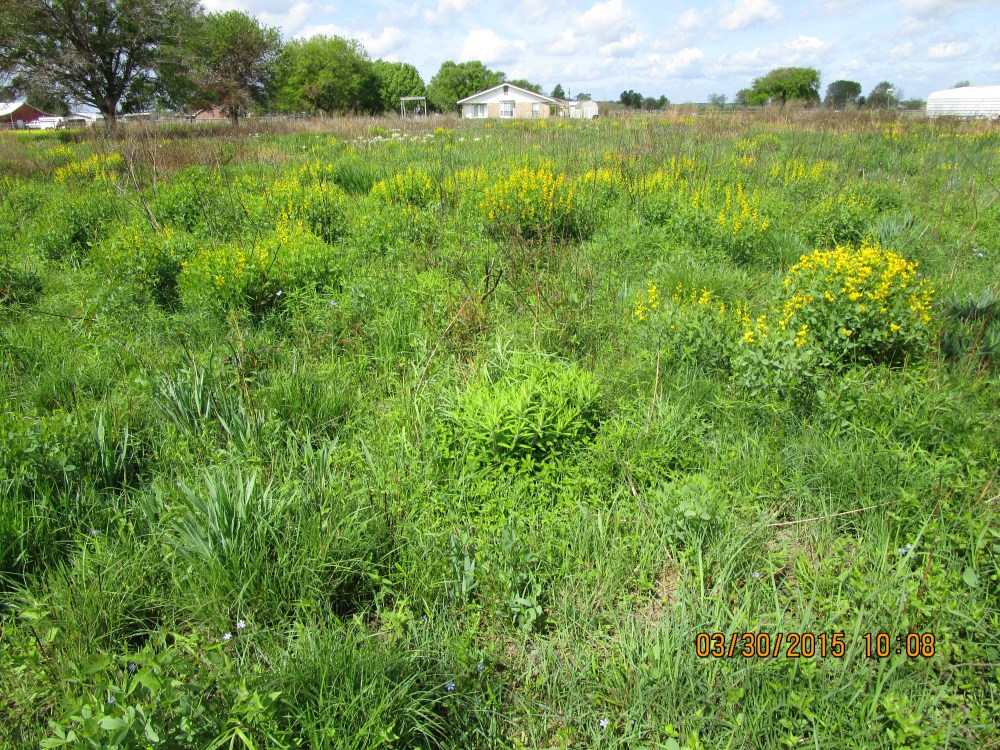

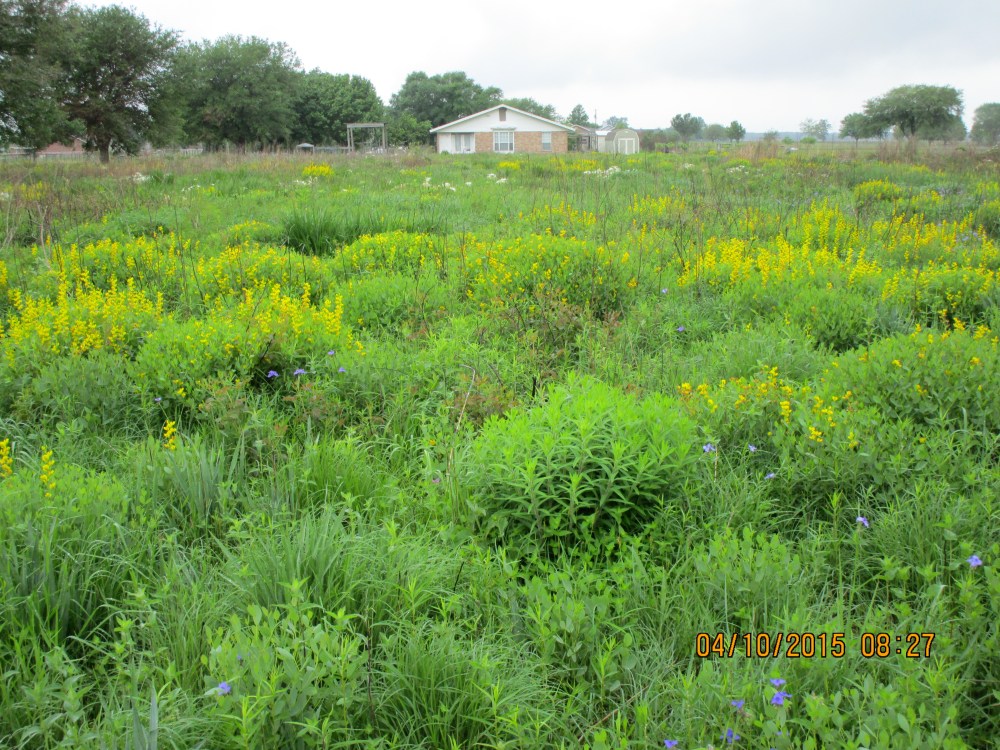

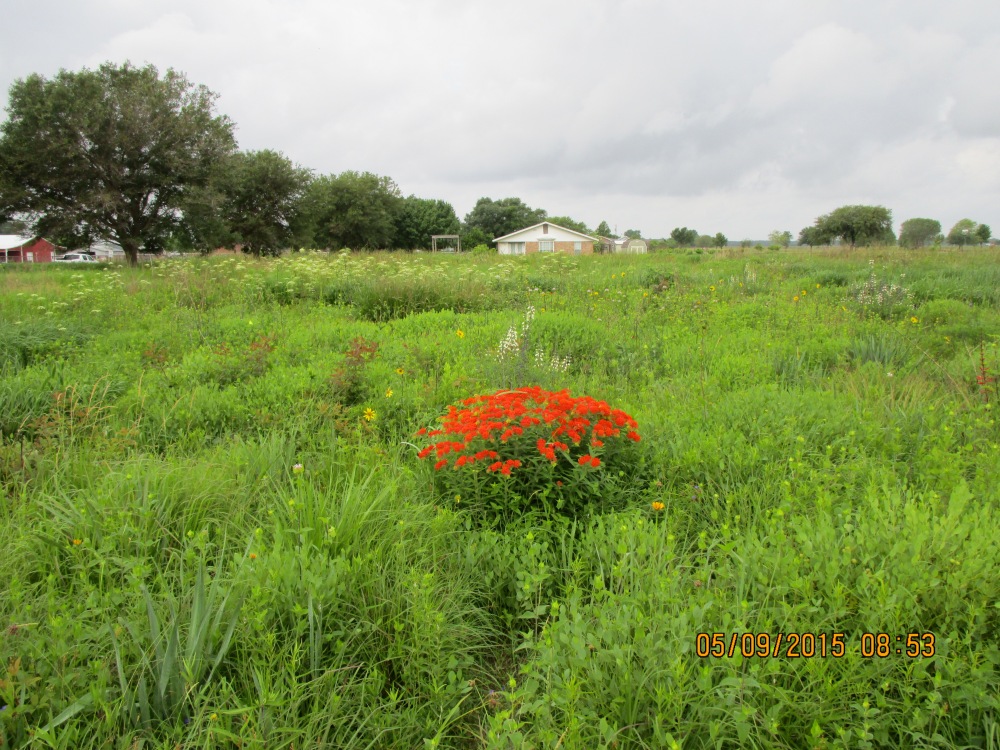
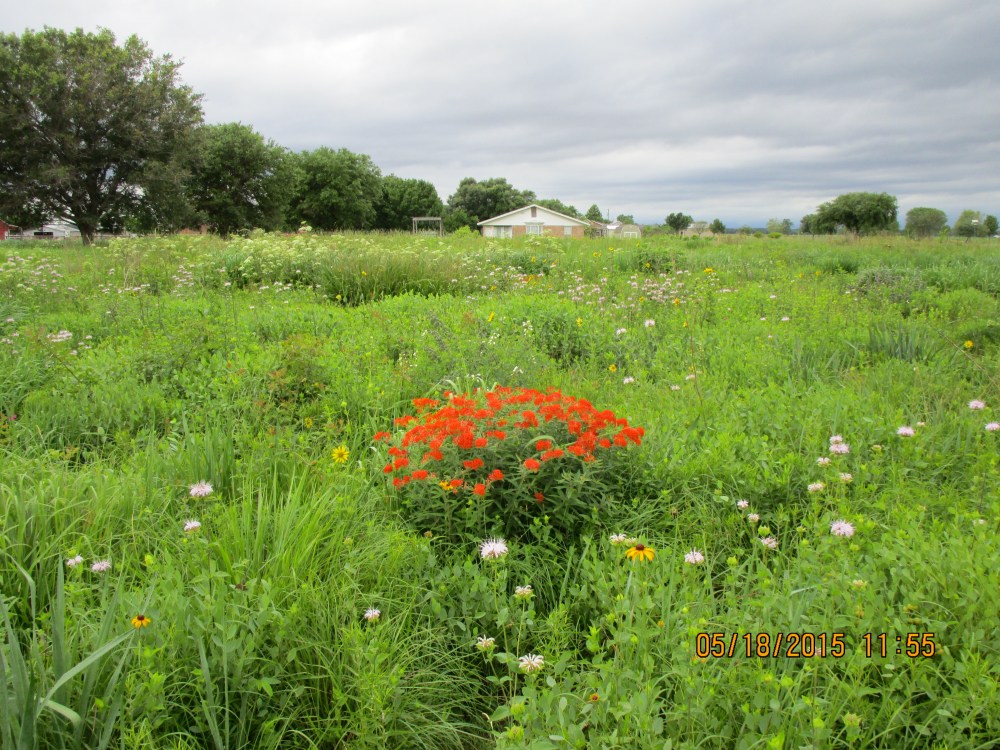
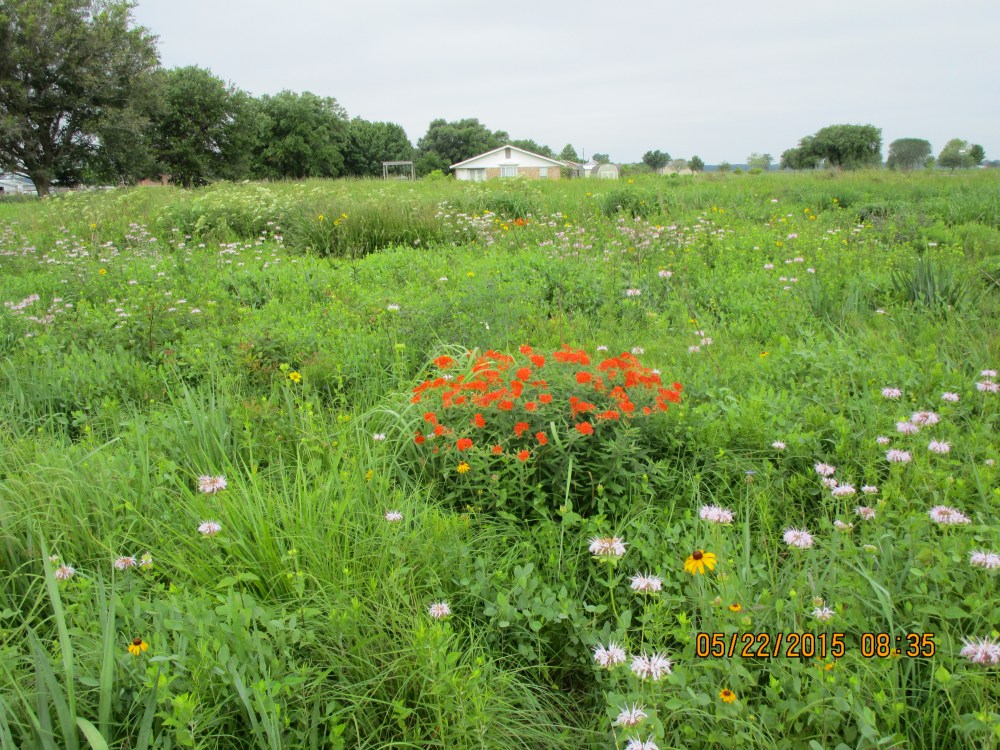
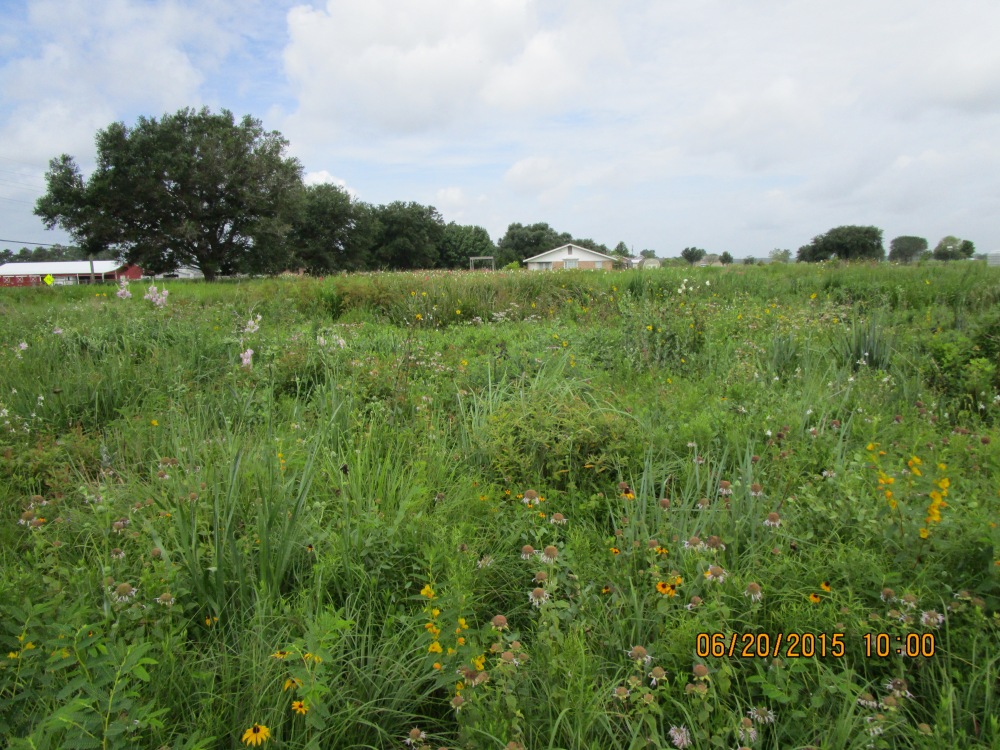
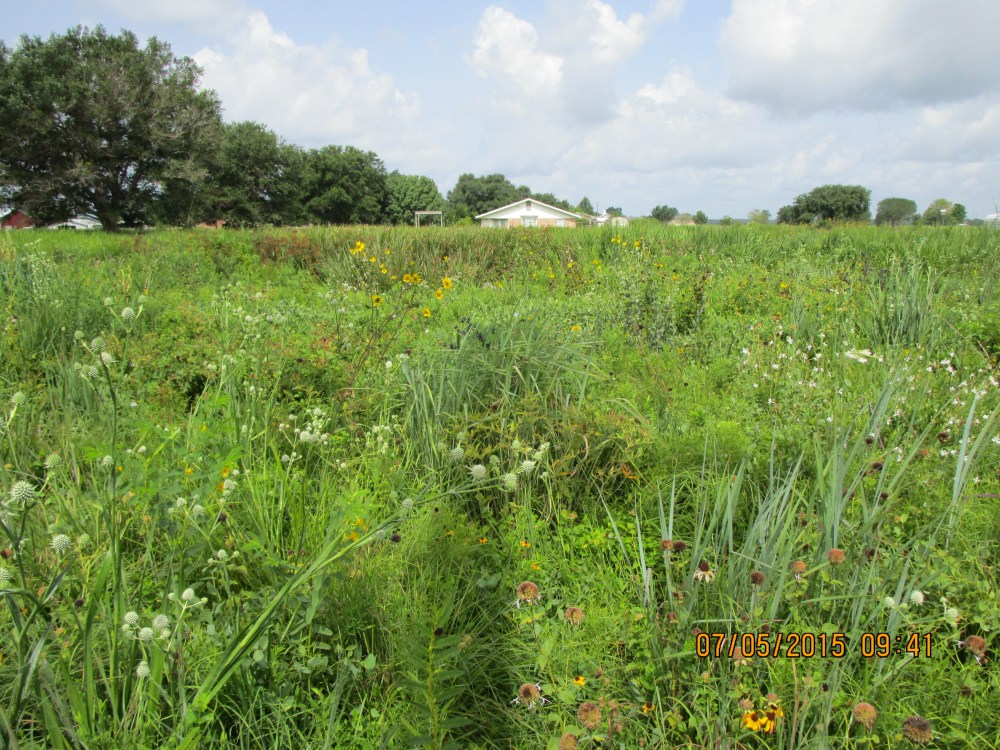
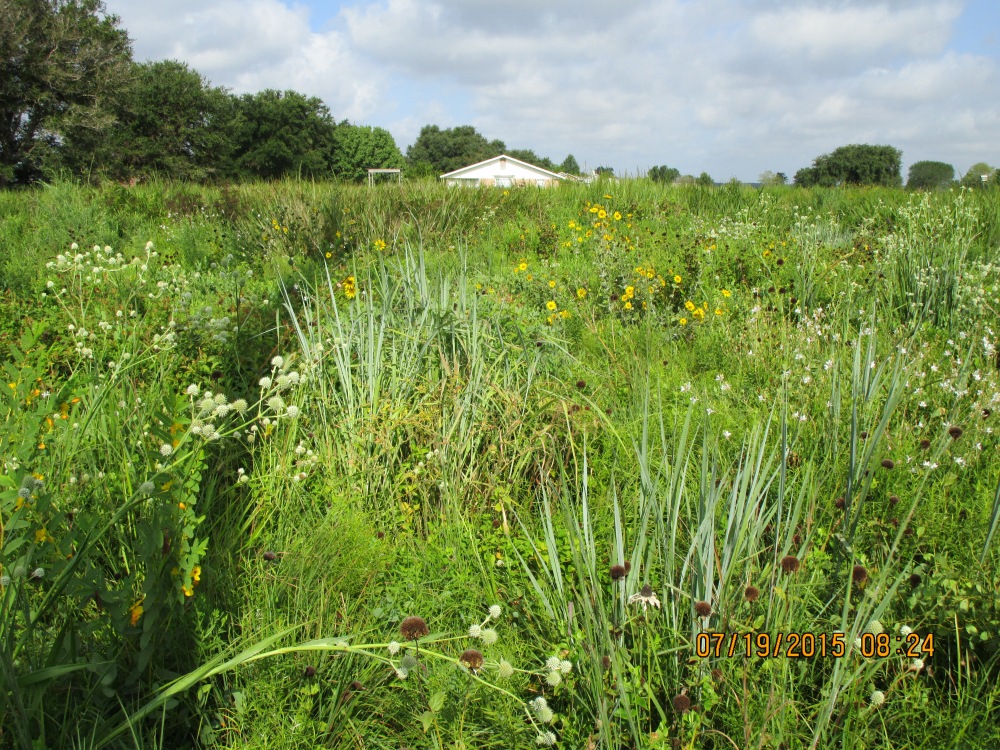
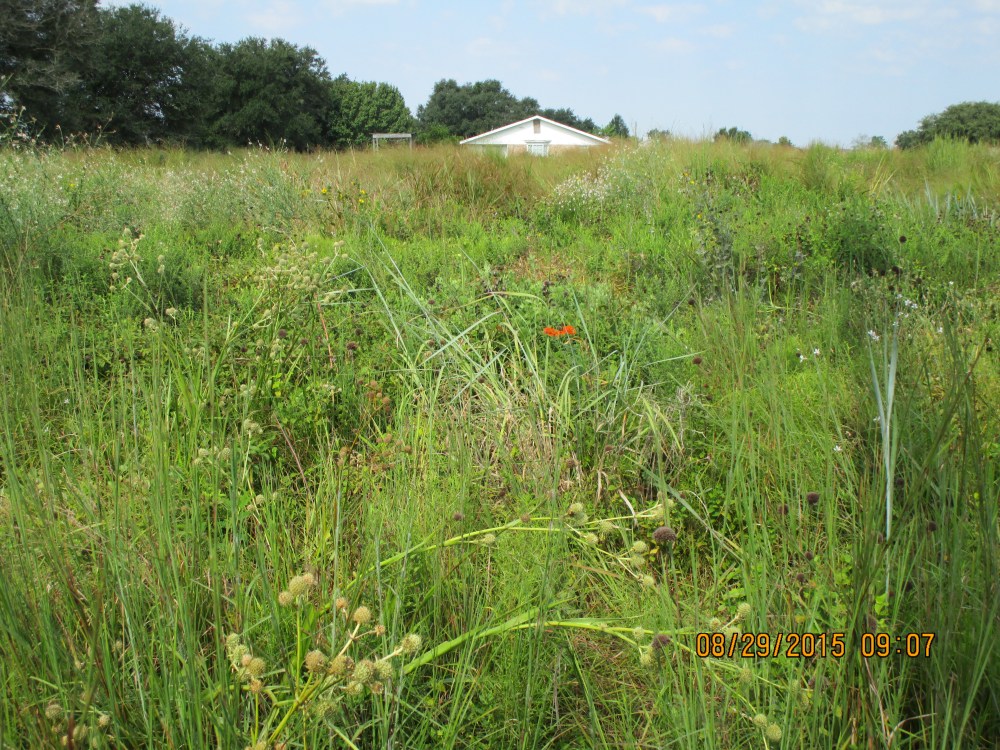
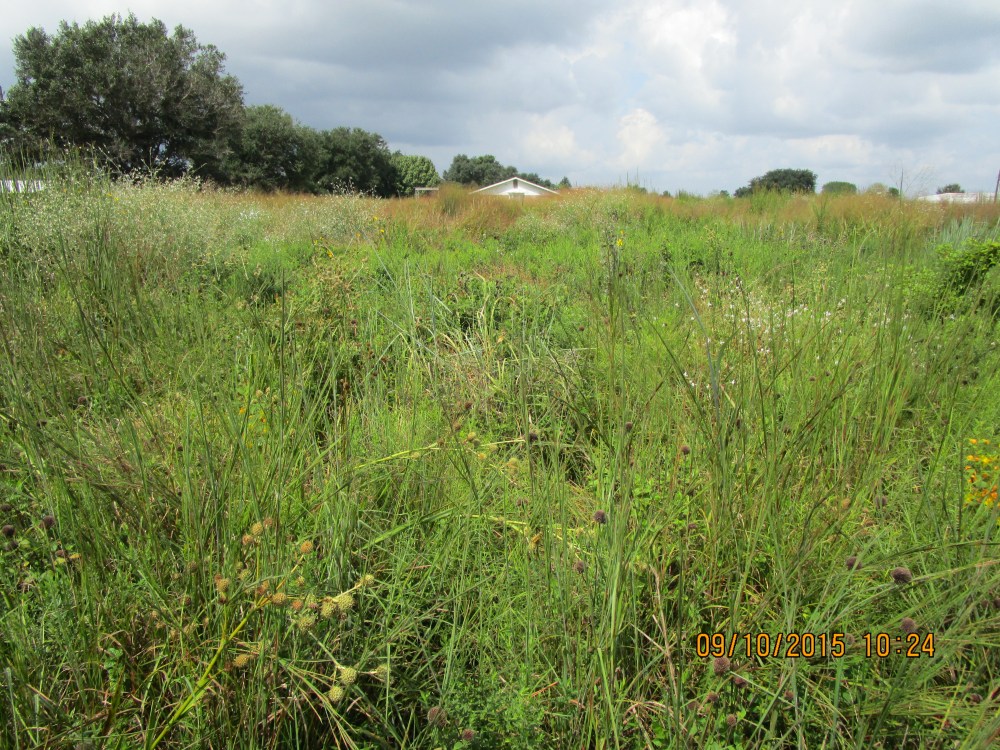
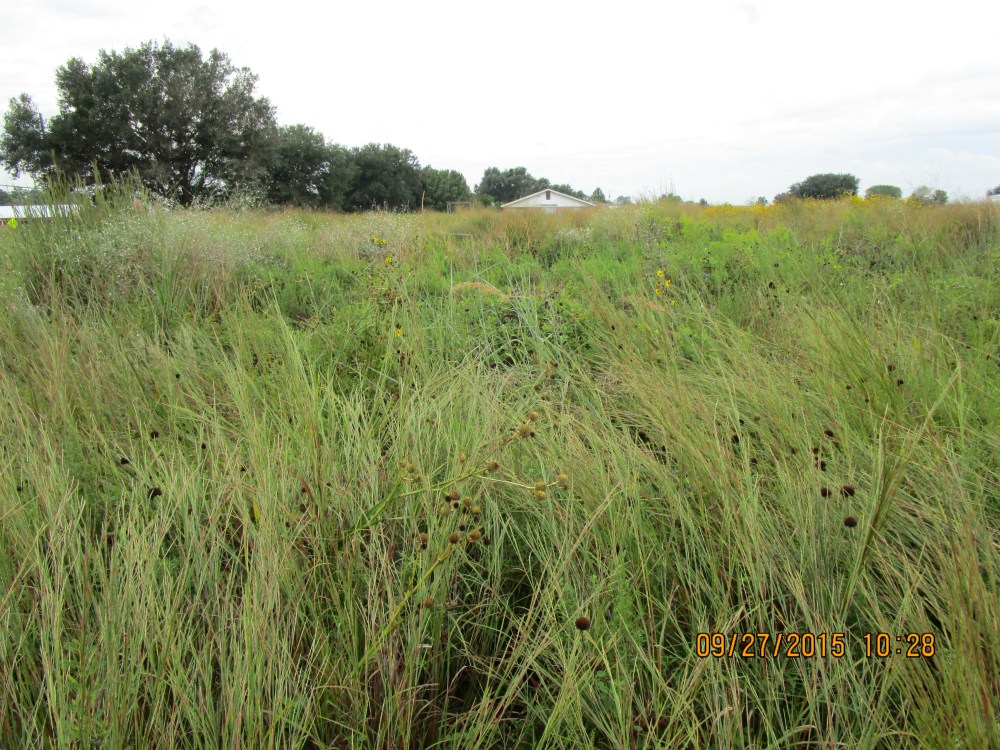

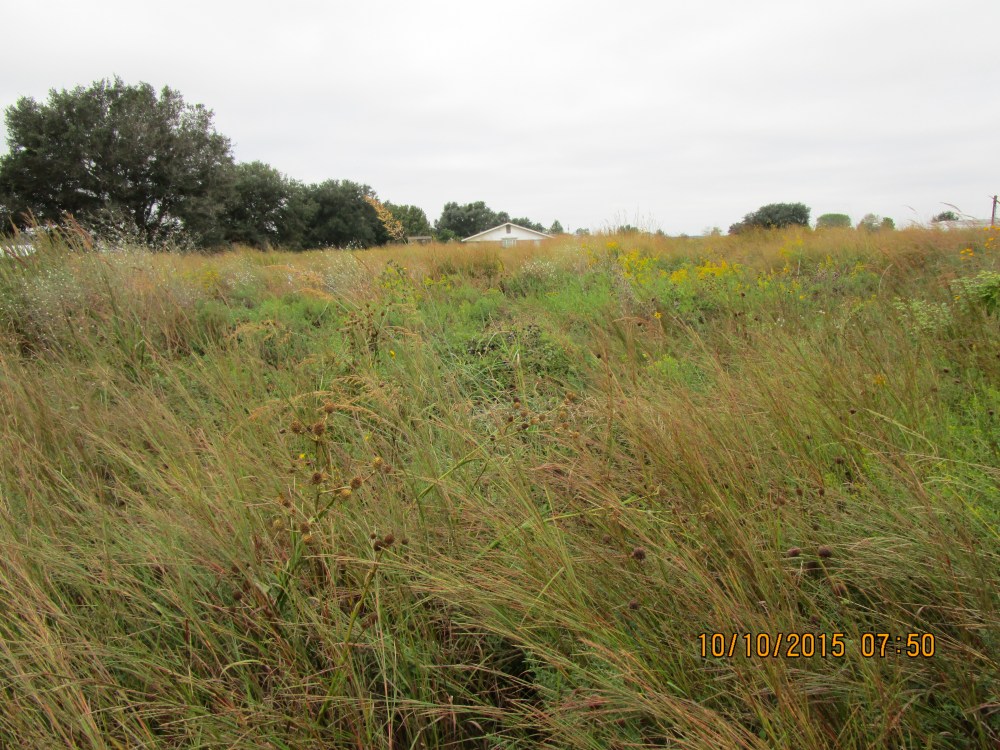
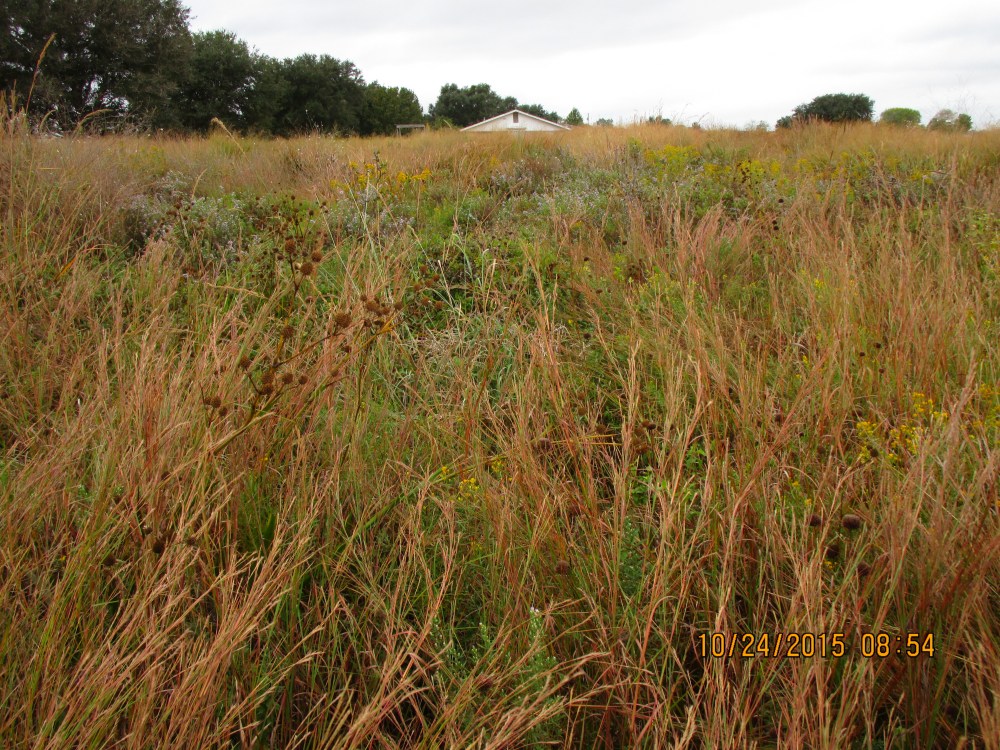

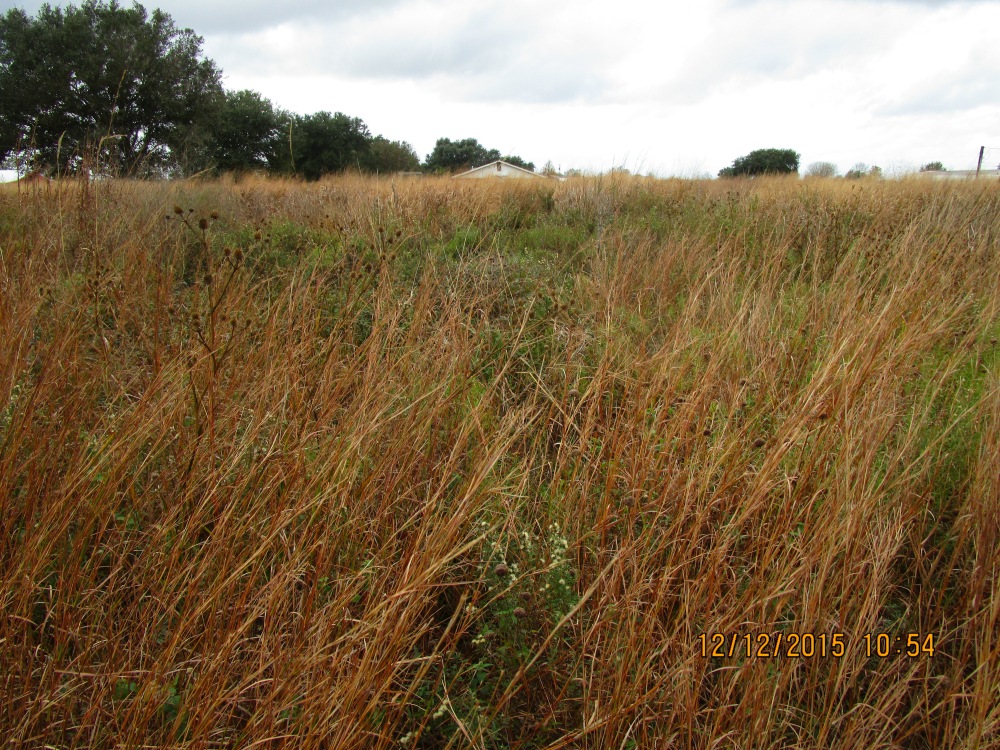
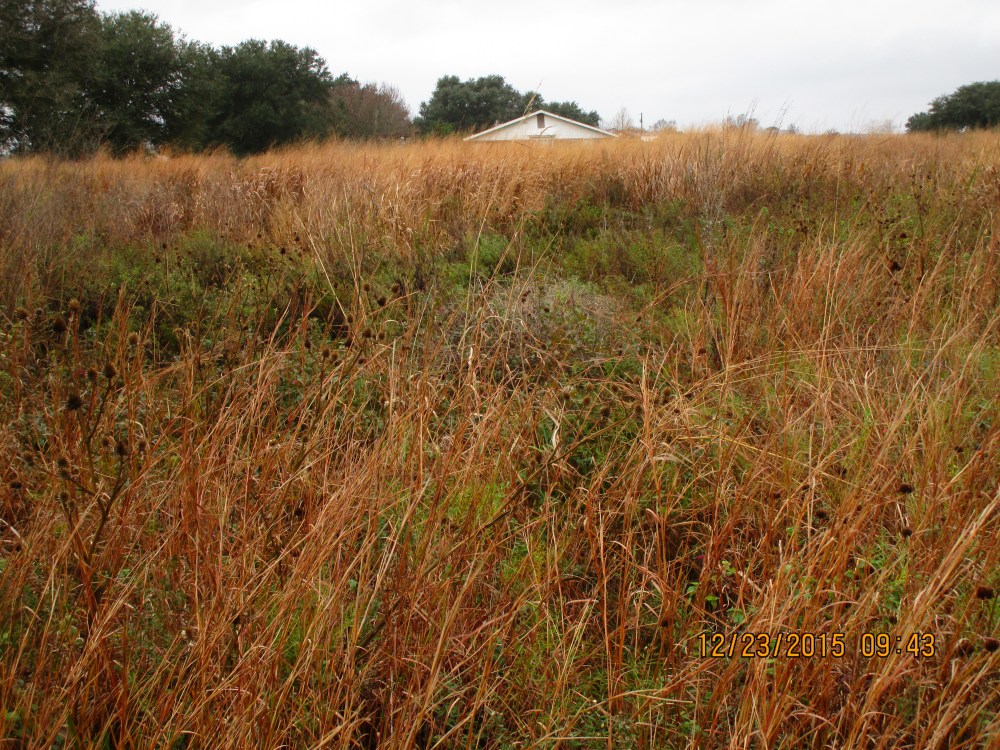
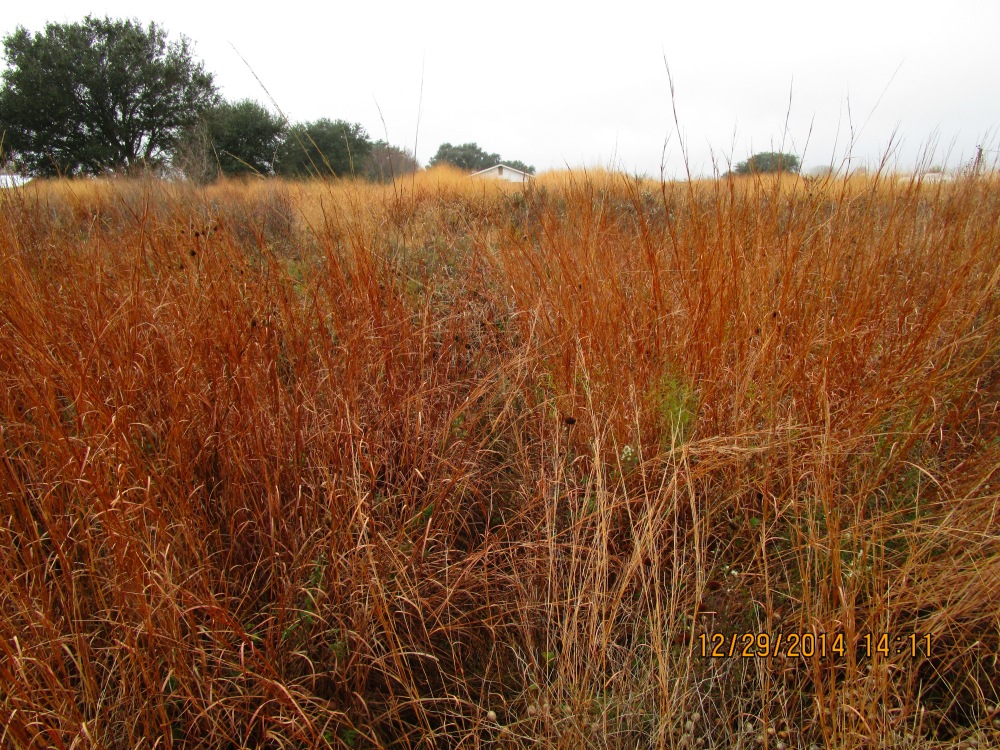

There is a bit of confusion about monarch oviposition (egg-laying) and feeding preferences. Common milkweed is the primary food of Midwestern monarch caterpillars because it is by far the most abundant and evenly distributed species, not because it is the most favored by the insect. Apparently, monarchs will lay eggs on just about any milkweed (genera Asclepias and Cynanchum), but in side by side comparisons of the most most common species in central USA, they prefer swamp milkweed (A. incarnata) above all, then common milkweed (A. syriaca) = showy milkweed (A. speciosa, of the western half of the region) > orange milkweed (A. tuberosa) > vine milkweed (C. laeve). Egg-laying females are highly attracted to tropical milkweed (A. curassavica), native to the American Tropics, and often planted in gardens, but this highly toxic milkweed actually stunts monarchs’ growth some (lower body weight and smaller relative wingspan compared to monarchs reared on other milkweeds), and there are indications there may be other detrimental effects to caterpillars growing on dense plantings of these milkweed, such as increased likelihood of disease transmission among the high populations of caterpillars that can form on them.